SPECIAL TOPIC Modelling / Interpretation
EAGE NEWS 2023 Award Winners
INDUSTRY NEWS UK offers 20 carbon storage licences
TECHNICAL ARTICLE Deep learning shear prediction models

VOLUME 41 I ISSUE 7 I JULY 2023

cgg.com/earthdata SE E THINGS DI FF ERE NT LY ALL-ROUND BETTER SUBSURFACE IMAGING Scan the QR code to see for yourself.
EAGE Publication
CHAIR EDITORIAL BOARD
Gwenola Michaud (Gwenola.Michaud@cognite.com)
EDITOR
Damian Arnold (arnolddamian@googlemail.com)
MEMBERS, EDITORIAL BOARD
• Lodve Berre, Norwegian University of Science and Technology (lodve.berre@ntnu.no)
Philippe Caprioli, SLB (caprioli0@slb.com) Satinder Chopra, SamiGeo (satinder.chopra@samigeo.com)
• Anthony Day, PGS (anthony.day@pgs.com)
• Peter Dromgoole, Retired Geophysicist (peterdromgoole@gmail.com)
• Rutger Gras, Consultant (r.gras@gridadvice.nl)
• Stephen Hallinan, CGG Stephen.Hallinan@CGG.com
• Hamidreza Hamdi, University of Calgary (hhamdi@ucalgary.ca)
Clément Kostov, Freelance Geophysicist (cvkostov@icloud.com)
Peter Rowbotham, Apache (Peter.Rowbotham@apachecorp.com)
• Pamela Tempone, Eni (Pamela.Tempone@eni.com)
• Angelika-Maria Wulff, Consultant (gp.awulff@gmail.com)
EAGE EDITOR EMERITUS
Andrew McBarnet (andrew@andrewmcbarnet.com)
PUBLICATIONS MANAGER
Martha Theodosiou (mtu@eage.org)
MEDIA PRODUCTION
Saskia Nota (firstbreakproduction@eage.org)
PRODUCTION ASSISTANT
Ivana Geurts (firstbreakproduction@eage.org)
ADVERTISING INQUIRIES corporaterelations@eage.org
EAGE EUROPE OFFICE
Kosterijland 48
3981 AJ Bunnik
The Netherlands
• +31 88 995 5055
• eage@eage.org www.eage.org
EAGE MIDDLE EAST OFFICE
EAGE Middle East FZ-LLC
Dubai Knowledge Village
Block 13 Office F-25
PO Box 501711 Dubai, United Arab Emirates
• +971 4 369 3897 middle_east@eage.org
• www.eage.org
EAGE ASIA PACIFIC OFFICE
UOA Centre
Office Suite 19-15-3A
No. 19, Jalan Pinang 50450 Kuala Lumpur Malaysia
• +60 3 272 201 40
• asiapacific@eage.org
• www.eage.org
EAGE AMERICAS SAS
Edificio Centro Ejecutivo Santa Barbara Av. Cra. 19 #118-95 - Office: 501
• +57 310 8610709
• americas@eage.org
• www.eage.org
EAGE MEMBERS CHANGE OF ADDRESS NOTIFICATION

Send to: EAGE Membership Dept at EAGE Office (address above)
FIRST BREAK ON THE WEB www.firstbreak.org
ISSN 0263-5046 (print) / ISSN 1365-2397 (online)
FIRST BREAK I VOLUME 41 I JULY 2023 1 Editorial Contents 3 EAGE News 13 Personal Record Interview — Emma Bell-Davies 14 Monthly Update 16 Crosstalk 19 Industry News Technical Articles 31 Tutorial: Compressive sensing Ian F. Jones 41 A comparison of conventional and deep-learning shear prediction models applied on a thick Jurassic carbonate section Saleh K Almeshari, Aun Al Ghaithi and Mukarram Ahmed Sp ecial Topic: Modelling / Interpretation 47 GradBAS – a new workflow to enhance intercept and gradient data quality Hau Pham Huu 53 Application of high-resolution Sub Bottom Profiling data for the interpretation of shallow lake sediments Christoph Georg Eichkitz, Marcellus Gregor Schreilechner, Erwin Heine, Marina Golja and Christoph Hauer 59 Measurements and the arrow of time Huw James 63 Applicability of spectral decomposition and band-limited instantaneous attributes David Markus and Donald C. Adams 69 Waveform classification applied on a stack of horizons: a larger-scale comparison Julien Razza, Fabien Cubizolle and Lory Evano 75 Understanding and modelling brittle deformation in the earth: insight from a novel experimental approach Anita Torabi 81 Improving carbon storage play assessment through seismic interpretation David Barlass, Sam Head and Hector Barnett 90 Calendar 53 cover: Digital elevation model. GIS product made after processing aerial pictures. Application of high-resolution Sub Bottom Profiling data for the interpretation of shallow lake sediments FIRST BREAK ® An
European Association of Geoscientists & Engineers
Board 2023-2024
Near Surface Geoscience Circle
Esther Bloem Chair
Andreas Aspmo Pfaffhuber Vice-Chair
Micki Allen Contact Officer EEGS/North America
Adam Booth Committee Member
Hongzhu Cai Liaison China
Deyan Draganov Technical Programme Officer
Wolfram Gödde Liaison First Break
Hamdan Ali Hamdan Liaison Middle East
Vladimir Ignatev Liaison CIS / North America
Musa Manzi Liaison Africa
Myrto Papadopoulou Young Professional Liaison
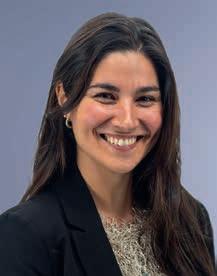
Catherine Truffert Industry Liaison


Mark Vardy Editor in Chief Near Surface Geophysics
Florina Tuluca Committee member
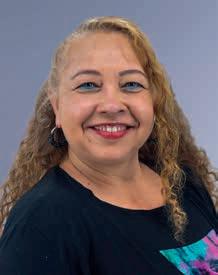

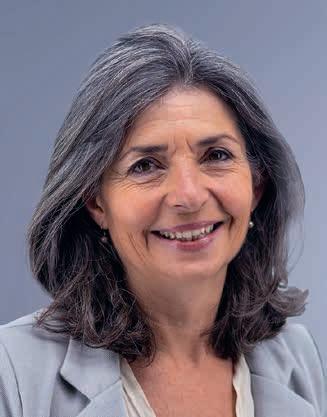
Oil & Gas Geoscience Circle
Yohaney Gomez Galarza Chair
Johannes Wendebourg Vice-Chair



Lucy Slater Immediate Past Chair
Erica Angerer Member
Wiebke Athmer Member
Tijmen Jan Moser Editor-in-Chief Geophysical Prospecting
Adeline Parent WGE SIC Liaison
Matteo Ravasi YP Liaison
Jonathan Redfern Editor-in-Chief Petroleum Geoscience

Giovanni Sosio DET SIC Liaison
Aart-Jan van Wijngaarden Technical Programme Officer
Sustainable Energy Circle
Carla Martín-Clavé Chair
Giovanni Sosio Vice-Chair
SUBSCRIPTIONS
First Break is published monthly. It is free to EAGE members. The membership fee of EAGE is € 80.00 a year including First Break, EarthDoc (EAGE’s geoscience database), Learning Geoscience (EAGE’s Education website) and online access to a scientific journal.
Companies can subscribe to First Break via an institutional subscription. Every subscription includes a monthly hard copy and online access to the full First Break archive for the requested number of online users.
Orders for current subscriptions and back issues should be sent to EAGE Publications BV, Journal Subscriptions, PO Box 59, 3990 DB, Houten, The Netherlands. Tel: +31 (0)88 9955055, E-mail: subscriptions@eage.org, www.firstbreak.org.
First Break is published by EAGE Publications BV, The Netherlands. However, responsibility for the opinions given and the statements made rests with the authors.
COPYRIGHT & PHOTOCOPYING © 2023 EAGE
All rights reserved. First Break or any part thereof may not be reproduced, stored in a retrieval system, or transcribed in any form or by any means, electronically or mechanically, including photocopying and recording, without the prior written permission of the publisher.
PAPER
The publisher’s policy is to use acid-free permanent paper (TCF), to the draft standard ISO/DIS/9706, made from sustainable forests using chlorine-free pulp (Nordic-Swan standard).
2 FIRST BREAK I VOLUME 41 I JULY 2023
Laura Valentina Socco Vice-President
Edward Wiarda President
Aart-Jan van Wijngaarden Technical Programme Officer
Esther Bloem Chair Near Surface Geoscience Circle
Maren Kleemeyer Education Officer
Yohaney Gomez Galarza Chair Oil & Gas Geoscience Circle
Carla Martín-Clavé Chair Sustainable Energy Circle
Caroline Le Turdu Membership and Cooperation Officer
Peter Rowbotham Publications Officer
Pascal Breton Secretary-Treasurer
Congratulations to our 2023 Award winners
Every year at the Annual Conference, our EAGE Awards are presented to honour individuals who have demonstrated outstanding dedication to geoscience and engineering, and the EAGE community. As an Association with the mission of promoting innovation and technical progress for inclusive and sustainable development, EAGE recognises the efforts of its members and their contributions to the development and cooperation in geoscience and related engineering disciplines. Candidates for the 2023 Awards were nominated by colleagues, such as yourself. Nominations were submitted to an international Awards Committee who worked hard to select the winners. EAGE is delighted to announce the following exceptional winners for the 2023 Awards.
Desiderius Erasmus Award
For lifetime contributions in the field of resource exploration and development.
Kamy Sepehrnoori
Prof Sepehrnoori is renowned for developing specialised research simulators, for chemical flooding and miscible gas flooding, which are considered the most complete and accurate simulators for
enhanced oil recovery processes. He is also an inspiring mentor and educator who shares his extensive knowledge and experience to nurture students and help them explore new horizons.
Honorary Membership Award
For highly significant and distinguished contributions to the geoscience community at large or to the Association in particular.
Full coverage of Vienna
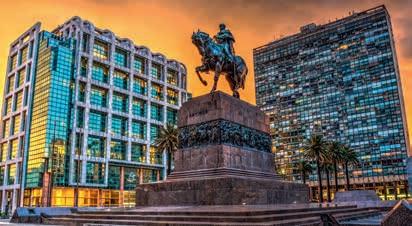
Don’t miss our August issue which will include reports and photos from last month’s fantastic EAGE Conference & Exhibition in Vienna.




George Apostolopoulos
Prof Apostolopoulos from the National Technical University of Athens-Greece is receiving the Honorary Membership Award in recognition for his outstanding, life-long support to the EAGE and the geoscience community. His technical contributions to the field of exploration and engineering geophysics are numerous and comprise the analysis of hundreds of geophysical datasets collected mostly in the Mediterranean area for a variety of relevant projects.
Conrad Schlumberger Award
For outstanding contributions to the scientific and technical advancement of the geosciences, particularly geophysics.
René-Édouard Plessix
René-Edouard Plessix is recognised for outstanding achievements in the development and industrial applications of Full-Waveform Inversion. He has made
FIRST BREAK I VOLUME 41 I JULY 2023 3 Communities promote career opportunities 06 GET event beckons 08 South Atlantic talk in Uruguay 12 HIGHLIGHTS
fundamental contributions to many FWI areas, from developing efficient 3D modelling and inversion tools to defining optimal field acquisition requirements to addressing challenges of multi-parameter FWI to implementing practical elastic FWI.
Alfred Wegener Award
For outstanding contribution to the scientific and technical advancement of EAGE’s disciplines, particularly petroleum geoscience and engineering.

Tao Yang
Dr Yang is an industry expert with an excellent track record in petroleum and energy technology innovation and implementation while integrating geoscience, data science and engineering. Dr Yang has made outstanding technical contributions in PVT and fluid characterisation,
ingenuity, and passion toward solving the big problems related to subsurface energy and climate sustainability.
and
Leandro de Figueiredo
One of the most talented and respected young geoscientists in the geophysics community. A key contributions of his has been the definition, development, and implementation of innovative stochastic methods for seismic inversion.
Nigel Anstey Award
Presented to the author of the best paper published in First Break in the past year.
Kim Senger and co-authors Peter Betlem, Tom Birchall, Luiz Gonzaga Jr, Sten-Andreas Grundvåg, Rafael Kenji Horota, Andreas Laake, Lilith Kuckero, Atle
same hole. Volume 70, Issue 9, Oct 2022, p. 1475 – 1486.
Norman Falcon Award
Presented to the authors of the best paper published in Petroleum Geoscience in the past year.
Diveena Danabalan and co-authors Jon G. Gluyas, Colin G. Macpherson, Thomas H. Abraham-James, Josh J. Bluett, Peter H. Barry and Chris J. Ballentine
For the paper The principles of helium exploration. Volume 28, Issue 2, May 2022.
Ludger Mintrop Award
Presented to the authors of the best paper published in Near Surface Geophysics in the past year.
Alessandro Arato and co-authors Federico Vagnon, Cesare Comina
For the paper First application of a new seismo-electric streamer for combined resistivity and seismic measurements along linearly extended earth structures. Volume 20, Issue 2, Mar 2022, p. 117 – 134.
Robert Mitchum Award
Presented to the authors of the best paper published in Basin Research in the past year.
Jonas Preine and co-authors Jens Karstens, Christian Hübscher, Gareth J. Crutchley, Timothy H. Druitt, Florian Schmid, Paraskevi Nomikou.
gas-based improved oil recovery, digital innovation on real-time fluid identification, low carbon innovation in CCS and hydrogen value chain.
Arie van Weelden Award
For Young Professionals who have made highly significant contributions to one or more of the disciplines in our Association.
Wen Song
Currently assistant professor of Petroleum and Geosystems Engineering at the University of Texas at Austin, Dr Song is recognised for her technical expertise,
Mørk, Sverre Planke, Nil Rodes, Aleksandra Smyrak-Sikora
For the paper Digitising Svalbard’s Geology: the Festningen Digital Outcrop Model. Volume 40, Issue 3, Mar 2022, p. 47 – 55.
Loránd Eötvös Award
Presented to the author of the best paper published in Geophysical Prospecting in the past year.
Anton Ziolkowski
For the paper Explosive source signature determination: Two unequal shots in the
For the paper The Hidden Giant: How a rift pulse triggered a cascade of sector collapses and voluminous secondary mass-transport events in the early evolution of Santorini. Volume 34, Issue 4, Jul 2022, p. 1465 – 1485.
Guido Bonarelli Award
Presented to the author of the Best Oral Presentation at the previous EAGE Annual Conference.
Stian Hegna
For the paper The Acoustic Wavefield Generated by a Vessel Sailing on Top of a Streamer Spread, presented at the 83rd EAGE Annual Conference & Exhibition 2022.
4 FIRST BREAK I VOLUME 41 I JULY 2023 EAGE NEWS
Award winners at EAGE Annual Opening in Vienna.
YOU NOW HAVE A CHOICE
Powerful physics. Rapid turnaround. Superior imaging. Obtain unrivalled results faster with DUG’s Multi-parameter FWI Imaging technology. Simultaneous model-building and high-frequency, leastsquares imaging delivers accurate, high-resolution Earth models using field-data input — without the many time-consuming, subjective, serial steps of a conventional processing and imaging workflow!
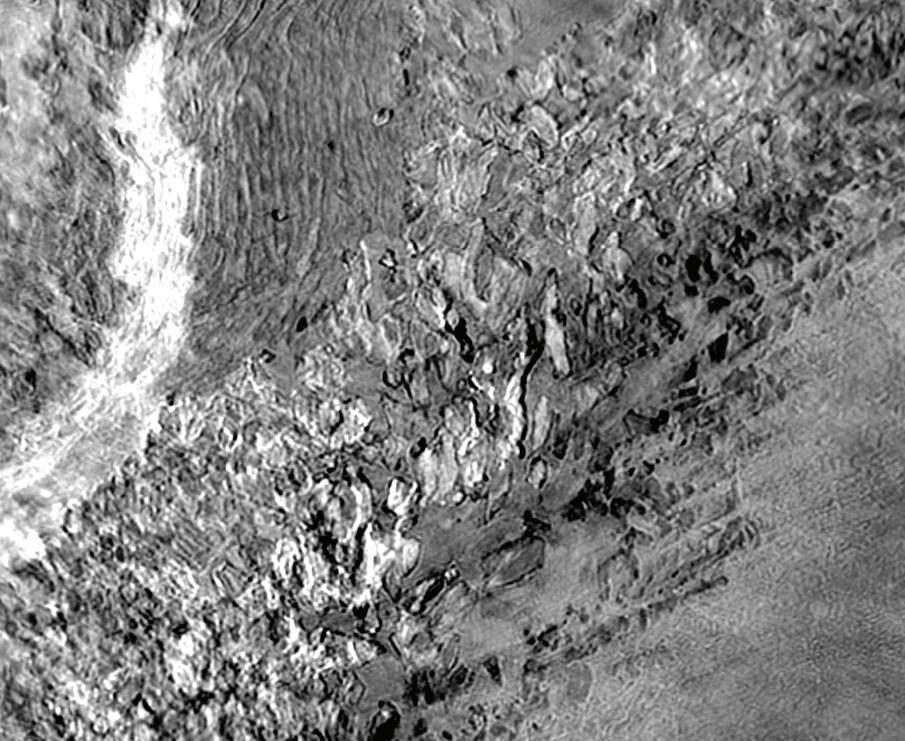
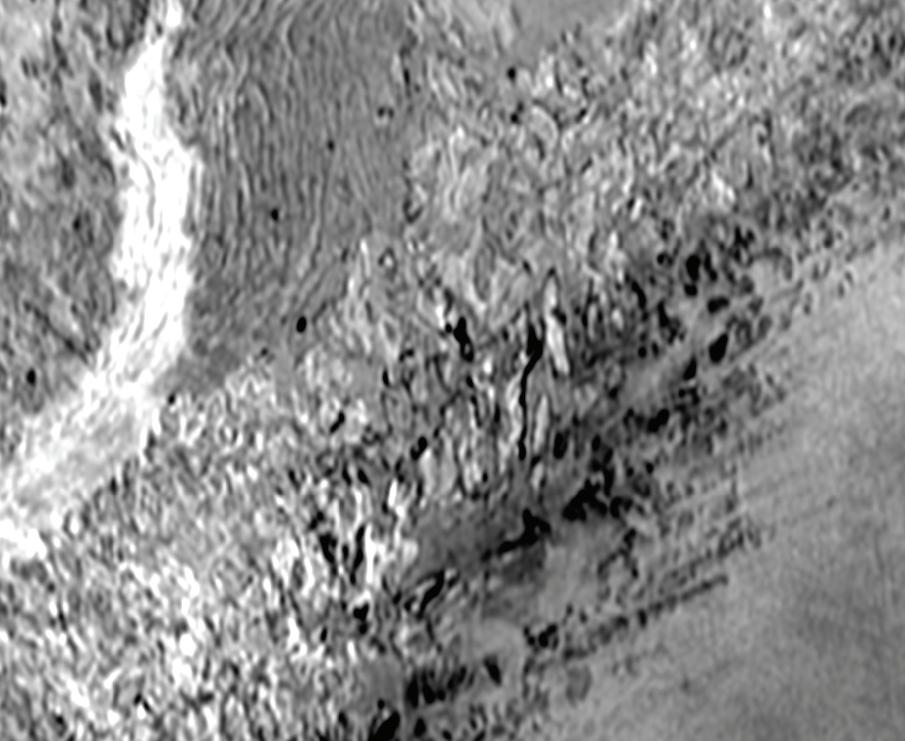
Let’s talk — Contact info@dug.com •ISO 27001• OC M PASSASSURANCESERV SEC •ISO 9001• OC M PASSASSURANCESERV SEC dug.com/fwi
Designature Deghost Demultiple Depth Migration Model Building Regularisation FIELD DATA Traditional
&
FIELD DATA
Processing
Imaging
MP-FWI Multi-parameter FWI Imaging
EAGE Communities focus the spotlight on career development opportunities
The EAGE Annual 2023 was a great platform for our Technical and Special Interest Communities to expand the professional horizons of its members.

The Young Professionals Special Session ‘Career Diversity within and Beyond Geoscience’, for example, highlighted the skills that might be useful in future careers, as well as how the careers can look like with the skills on hand, through the lens of various disciplines.
In this regard, Chris Nind, vice president business development, Abitibi Geophysics, and member of the EAGE Mineral Exploration Geophysics Technical Community, explained that ‘the great unknown is under our feet; we know less about what is 5 km under our feet than what is 500 km above’, referring to the key role professionals focusing on critical minerals will have in energy transition.
(DET) Technical Community, addressed how different geoscience and engineering disciplines can contribute to the achievement of the Sustainable Development Goals. For example, she asked which goals can be reached with the help of a geohazard mitigation professional? No poverty (SDG 1); Industry, innovation, and infrastructure (SDG 9); Sustainable cities and communities (SDG 11); Climate action (SDG 13); Life below water (SDG 14), and Life on land (SDG 15). In summary, ‘the workforce has to adapt to the needs of societies’.
The session concluded with a Young Professionals Networking event, organised in collaboration with SPE Vienna Basin Section. Participants also had the chance to connect with fellow colleagues and exchange their points of view about multi-disciplinary career opportunities in geoscience and engineering.
Meanwhile the Women in Geoscience and Engineering Community hosted the session ‘The Role of Women’s Leadership in Securing a Sustainable Future’, led by Mikki Corcoran, vice president sustainability, SLB.
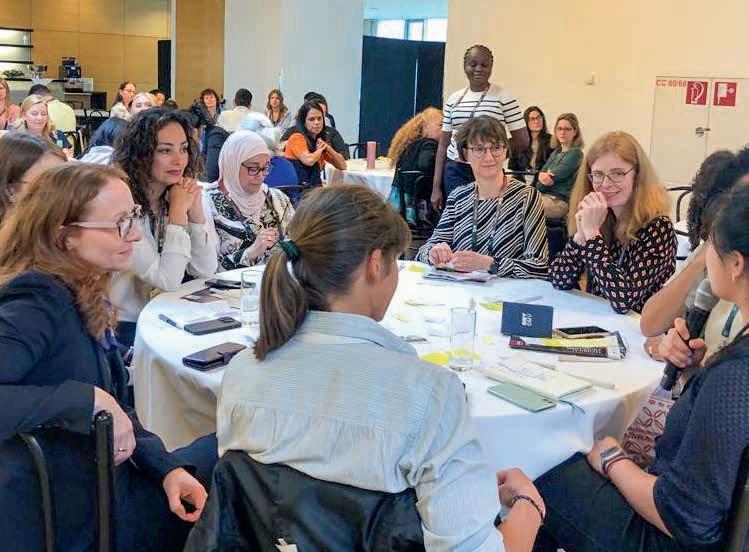
Mikki explained that clean energy transitions will require innovative solutions and business models to be adopted. To enable a just energy transition, greater participation from a diverse talent pool is required, with the emphasis on driving equity in the workplace, the supply chain, and in the communities that we live and work in.
At the ‘Interactive Session: Skills for the Energy Transition’, the Education Committee and the Decarbonization and Energy Transition (DET) Technical Community presented their initiative on
Chris Walker, chief geophysicist, BGP Offshore and member of the Seismic Acquisition Technical Community, said that the choice of acquisition solutions available for new marine surveys has never been higher and is, therefore, a topic that should be further developed and adjusted to the new markets: windfarms, CCS, and marine minerals.
Carla Martin-Clave, engineering geologist, Jacobs and representative of the Decarbonization and Energy Transition
The keynote presentation was followed by an interactive session in which participants discussed how to drive their personal/professional strengths towards a sustainable future, recognised the key figures/mentors in their careers, identified examples of positive and negative leadership, and exchanged parental leave and childcare best practices from their companies and national policies. This approach is aimed at identifying the support networks and the barriers that the attendees face when entering the renewable energy sector and the energy transition.
mapping skills needed in energy transition. To make it easier for EAGE members to assess skills for their future role and courses that can help them to acquire these skills, the committee created an interactive tool comparing current and future role skills profile. Members will be able to choose an existing and a future role and assess which technical skills are required, together with recommendations on courses. At this moment we are collecting data from the community to ensure that the recommendations provided are in line with what members need.
Help us identify and map technical skills required in the energy transition! The survey consists of four questions and requires only a few minutes to complete.
Participants also had the opportunity to engage with several companies on skills needed for energy transition roles and how to develop a successful CV to pursue their particular interest.
Keep up with the discussions started in Vienna by connecting with the EAGE Communities on LinkedIn!
Take the survey:
6 FIRST BREAK I VOLUME 41 I JULY 2023 EAGE NEWS
EAGE Communities hosted enriching career development sessions at this year’s Annual Conference.
Women in Geoscience round table.
Lugano to host EAGE’s seventh HPC workshop
EAGE’s High Performance Computing (HPC) Workshop is returning for a seventh outing, this time in Lugano, Switzerland.
This year’s edition will focus on critical discussions including the role of HPC for a successful energy transition. It is more crucial than ever to analyse how HPC helps to achieve higher productivity, lower costs, and reduce risk by making better use of the huge amounts of data
generated by high-performance simulation and data analytics.
The workshop brings together experts to understand state-of-the-art key applications employed in the upstream industry and anticipate what ambitions are enabled by increased computational power.

The three-day workshop will feature both oral presentations and lightning
Next borehole geology workshop is in Al Khobar
EAGE’s Fifth Borehole Geology Workshop is scheduled to take place in the oil capital, Al Khobar, Saudi Arabia on 21-23 November 2023.
The workshop will build on the success of previous events held in 2015, 2017, 2019, and 2021. It aims to promote discussion and knowledge sharing on the different aspects of borehole geology, related technological innovations, hydrocarbon reservoirs, field studies, best practices, integrated approaches, and applications in new fields. Hopefully it will trigger collaboration between bore-
hole geologists and professionals of other subsurface disciplines.
An exciting aspect of the workshop is the field trip to Dammam Dome, the birthplace of Saudi Arabian oil. It includes five stops at well-exposed Eocene carbonates inside the Saudi Aramco campus. The trip by bus is less than 20 minutes from any location in Dammam or Khobar, where the attendees are expected to stay for the workshop.

You can register at https://eage. eventsair.com/fifth-eage-borehole-geology-workshop/registration.
EAGE Online Education Calendar
talks, panel sessions and keynotes from leading experts in the industry, as well as plenty of discussion sessions. The programme is coupled with a field trip to the Swiss National Supercomputing Centre in Lugano making this edition of the HPC workshop particularly special.
To register go to: https://eage. eventsair.com/eage-seventh-high-performance-computing-workshop/registration.
FIRST BREAK I VOLUME 41 I JULY 2023 7 EAGE NEWS
FOR THE FULL CALENDAR, MORE INFORMATION AND REGISTRATION PLEASE VISIT WWW.EAGE.ORG AND WWW.LEARNINGGEOSCIENCE.ORG. 1 JUN10 AUG GEOLOGICAL CO2 STORAGE BY A. BUSCH, E. MACKAY, F. DOSTER, M. LANDRO, P. RINGROSE EXTENSIVE ONLINE COURSE 24 HRS (INCL. 7 WEBINARS OF 1-2 HRS EACH) 3-5 JUL SUB-SURFACE UNCERTAINTY EVALUATION (SUE) BY MANISH AGARWAL INTERACTIVE ONLINE SHORT COURSE 4 HRS/DAY, 6 MODULES 5-7 JUL CASE STUDIES AND PRACTICAL CONSIDERATIONS IN GEOPHYSICAL ACQUISITION AND PROCESSING METHODS BY DR LUCA DE VINCENZI INTERACTIVE ONLINE SHORT COURSE 4 HRS/DAY, 9 PARTS 17-18 JUL BASICS OF CARBON CAPTURE STORAGE BY MIKE STEPHENSON INTERACTIVE ONLINE SHORT COURSE 4 HRS/DAY, 6 SECTIONS 24-27 JUL ROCK PHYSICS AND COMPUTATIONAL GEOPHYSICS BY DR JOSÉ M. CARCIONE INTERACTIVE ONLINE SHORT COURSE 4 HRS/DAY, 2 PARTS * EXTENSIVE SELF PACED MATERIALS AND INTERACTIVE SESSIONS WITH THE INSTRUCTORS: CHECK SCHEDULE OF EACH COURSE FOR DATES AND TIMES OF LIVE SESSIONS
Credit: Dr. M. M. Al-Fahmi (carbonate outcrop in Dammam Dome, inside Saudi Aramco area).
OUR JOURNALS THIS MONTH
Make our GET event your priority this year
We’re delighted to invite members to the EAGE’s 4th Annual Global Energy Transition Conference and Exhibition being held 14-17 November 2023 in Paris.
The event aims to create a premium platform bringing together researchers and practitioners across a wide range of technical disciplines to share and exchange knowledge together with key policy, strategy and business stakeholders. An exciting feature of this year’s GET23 conference will be a series of strategic seminars alongside our traditional technical program. The theme of the event is ‘Accelerating the path to a sustainable energy future’.
science into the various energy transition topics. In addition, we will cover environment, sustainability, society and solutions, georesources, nuclear energy and the role of education and training in our transition.
Your participation in the conference is a crucial step in furthering the discussion and generating ideas on how our community can continue to accelerate its path to a sustainable energy future.’

Geophysical Prospecting (GP) publishes primary research on the science of geophysics as it applies to the exploration, evaluation and extraction of earth resources. Drawing heavily on contributions from researchers in the oil and mineral exploration industries, the journal has a very practical slant. A new edition (Volume 71, Issue 6) will be published in June, featuring eleven articles.

Editor’s Choice article:
• Time-lapse PS-wave time-shifts and quantitative pressure-saturation discrimination applications — Ali Tura et al.
CHECK OUT THE LATEST GP
Please note that for two weeks this month, we are offering free access to the Editor’s Choice articles.
Conference chair Ellie MacInnes (CGG), says: ‘Our strategic sessions will place the conference into a global perspective of the need for action. A people-centered energy transition is key to achieving the UN’s Sustainable Development Goal (SGD7) of ensuring access to affordable, reliable, and sustainable modern energy for all. Together we will review government and regulatory frameworks and share the journey of our companies so far. We will look outside our industry to see what sustainability lessons we can learn and explore how we can keep our businesses resilient.
The extensive technical sessions will cover topics in offshore wind, CCUS, energy storage, geothermal, mineral exploration and how we integrate geo-
We encourage you to register for the conference to enjoy the early bird rates until 30 August 2023. If you want to contribute to the technical programme and present at GET23, the call for abstracts is open until 15 August 2023. Visit www. eageget.org for more information regarding the event in general and all the sponsoring opportunities that we have to offer.
Technical Programmes for Milan co-located workshops now available
For those looking forward to the Seventh EAGE Borehole Geophysics and Second EAGE Seabed Seismic Today workshops in Milan being held simultaneously on 18-20 September, the technical programmes for both workshops are now available.
We advise intending participants to not only register but secure accommodation at the earliest for these two workshops as
Milan is extremely busy that time of the year.
To view the full technical programmes, please see: https://eage.eventsair.com/ seventh-eage-borehole-geophysics-workshop/schedule and
https://eage.eventsair.com/second-eage-seabed-seismic-today-workshop/submission-instructions-guidelines.
8 FIRST BREAK I VOLUME 41 I JULY 2023 EAGE NEWS
Discussion at last year’s GET.
Local Chapter Netherlands is the best
When members’ communities succeed, the entire Association has a reason to celebrate. EAGE is all about fostering communications, fellowship and cooperation among geoscientists and engineers. One group truly embodies this mission by successfully establishing new connections and supporting members in its area. And that group is Local Chapter Netherlands, winner of the 2023 prize for Best Local Chapter of the Year.
LC Netherlands started off in 2019, a much anticipated focal point for the large community of EAGE members in the country. The following two years were a challenging time for all our communities worldwide, but LC Netherlands stayed active with a
variety of online and hybrid initiatives that enabled them to engage numerous professionals and dive into new topics.
Over the 2022-2023 period, with in-person meetings coming back, the Chapter found new ways to encourage team-building and to engage new members with the Association, reaching out particularly to students, young professionals and women in geoscience and engineering. Earlier this year it welcomed a new leadership team, which brought new energy as well as increased diversity – in terms of expertise, sector, age, etc – to reflect the community revolving around them.
The Prize – a contribution of €1000 towards future activities of the local community – was presented to the Chapter at the EAGE Annual in Vienna. We can’t wait to see what’s next for this group.

Progress on natural hydrogen discussed at LC Pau meeting
A lecture on natural hydrogen as a ‘game changer’ was presented by Dr Isabelle Moretti (University of Pau and Ardour region) at a recent meeting of Local Chapter Pau (France) held in April in the Hélioparc technology park.
Dr Moretti proposed a landscape of natural hydrogen considerations, from the geological origin and maturation of H2, showing that the time has come for large-scale exploration of potential natural resources. Her questions included - Is the business model already sustainable? Where to look for economical H2? Who are the operators? What is our level of knowledge concerning this new promising resource? What is its status in 2023?
Hydrogen is produced naturally by oxydo-reduction process of iron rich rocks and escape from the fumaroles along the mid-oceanic ridge or from strange features called fairy circles in
the continent but also, at the surface, emergence of faults such as the Pyrenean frontal faults. H2 is generated at depth by these chemical reactions involving ironrich formations that may be fast even at relatively low pressure and temperature conditions. As a rule, the generation of natural hydrogen is always linked to the presence of H20 except in the case of a late maturation of coal.
The scientific literature shows that the occurrence of permeable faults and fractures, the existence of hydrogen-degrading bacteria in the soil, and the lightness and chemical reactivity of the hydrogen molecule do not prevent the existence of significant resources, i.e., theoretical amount of H2 in the ground. But putting an estimate on the reserves as constrained by technical and economic constraints remains to be defined. This has not discouraged a recent explosion in the purchase of exploration permits
in Australia. Many European players are also entering the race.
Dr Moretti’s talk gathered a large audience, not only EAGE members but participants from the energy industry, research laboratories, contractors, and start-ups, as well as some retired professionals from the industry interested in better understanding the ins and outs of this new story.
Last July
EAGE Local Chapter Pau is also continuing its high-level paper lecture, ‘live only’, within the ‘Hélioparc’ technology park along with more than 30 other societies and laboratories involved in energy topics. This constant effort since its creation allows a wide exchange between professionals, researchers and students, and is contributing to geoscience’s dynamism in the Pau area.
FIRST BREAK I VOLUME 41 I JULY 2023 9 EAGE NEWS
Past president Diego Rovetta received the Best Local Chapter Prize on behalf of the LC Netherlands team at the EAGE Annual.
Being part of our student community is the way to go
If you’re a student pursuing a career in the geosciences or engineering fields, this is the perfect time to explore everything the Association has to offer you.
For starters, by becoming a member of EAGE you’ll have access to a vast network of industry professionals and academics who can provide you with mentorship, guidance, and potential job opportunities. You’ll also gain access to EAGE’s publications and our rich database, EarthDoc, where you can find valuable insights and research in the field.

In addition, there is the chance to participate in events dedicated to students and field trips that can help you learn from experienced professionals and fellow colleagues. On top of all this, at EAGE, you can establish yourself as a dedicated and committed member of the geoscience and engineering community. This can help you build a successful career and network in the industry.
One way to get started is by joining as a Student Chapter member, which provides numerous benefits, including networking opportunities, access to resources, professional development, and recognition. But don’t just take our word for it – here are some student testimonies about their experiences as EAGE Student Chapter members.
Ayxan Abdurakhimli, president, EAGE Student Chapter Khazar University - ‘I am happy to share my commitment. As a 2nd year student of Khazar University Oil and Gas Engineering Department Azerbaijan, I am closely involved in engineering and geosciences, and try to bring together students who are interested in these fields at the university. The biggest motivation is the chance to interact with engineers and students from foreign countries.’
Ali Salehi, president EAGE Student Chapter Isfahan University of Technology, Iran - ‘Our decision to join EAGE Chapters stemmed from a shared concern about the lack of a dynamic student community in geological topics, particularly petroleum branches. Our objective is to become one of the best EAGE Student Chapters. Our association’s roadmap includes sev-
eral programmes and activities, such as introducing students to the EAGE and encouraging them to become members, improving their academic skills through various training courses, familiarising them with current research topics in the engineering field, and communicating with the oil and gas industry experts through webinars’.
EAGE Student Chapter Federal University of Technology Akure, Nigeria - ‘We were inspired to form an EAGE Chapter because we wanted to develop a new focus—something uncommon and non-existent in our school; a society that will put a strong emphasis on near-surface geophysics, geology, big data and AI, and GIS. Also, we will engage with our neighborhood by going to high schools to encourage students to enroll in geoscience courses, educating the public about issues such as climate change, having quarterly town hall meetings for members to network, and organising field trips and industry visits. We will frequently collaborate with other sister organisations as well as local and international chapters of EAGE. We’ll also take a fun trip in December, and then wrap everything up with new leadership.’
EAGE Student Chapter University of Barishal, Bangladesh - ‘Our enthusiasm for geoscience and engineering unites us. Our chapter offers a chance for students with similar interests to meet, learn from one another, and participate in events that increase our knowledge of these disciplines.’
These testimonies highlight the many benefits of joining an EAGE Student Chapter. From networking opportunities and access to resources to professional development and recognition, the EAGE Student Chapter offers students the chance to enhance their knowledge, skills, and career prospects. In an era of increasing concerns about the future of geoscience and career possibilities, many students find themselves hesitant to pursue paths in this field, especially in petroleum-related disciplines. However, it is important to recognise that geoscientists are needed in
all sectors of the energy mix. To address these concerns and provide support for students and professionals alike, EAGE offers a wide range of resources, transferable skills, career advice, and connections that can help individuals navigate their professional journeys with confidence.
One of the key strengths of EAGE lies in its multi-disciplinary ethos, which supports geoscientists and engineers across various fields to collaborate, transition, and engage with the latest technological developments. This is particularly relevant as the digital revolution continues to shape the energy sector. Building connections and interacting directly with international professionals and experts is why many join the Association in the first place.
The transition from being a student to entering the professional world in particular can be a daunting process. Recognising this, we have established the Young Professionals (YP) community, which provides a supportive network for recent graduates and early-career professionals. Through the YP community, individuals can access mentorship programs, career guidance, and networking opportunities tailored to their specific needs. By connecting with experienced professionals and engaging in YP activities, individuals can navigate this crucial stage of their professional journey with confidence, acquiring valuable insights and forging connections that will propel their careers forward.
If you’re a student pursuing a career in geoscience and engineering, joining a EAGE Student Chapter could be a great way to gain a competitive edge and set yourself up for success.
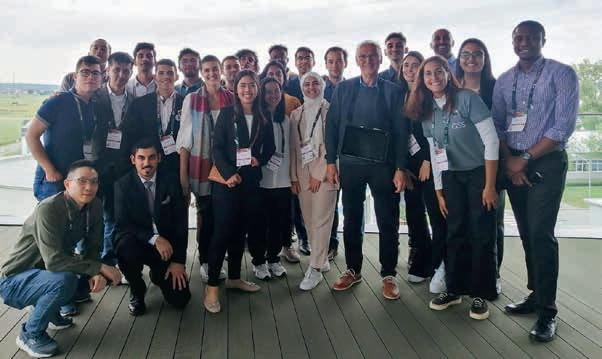
10 FIRST BREAK I VOLUME 41 I JULY 2023 EAGE NEWS
EAGE Student Community enjoys dedicated career development initiatives.
Deserved recognition for Best Instructors of 2022
Congratulations are due to Professors Andreas Busch, Eric Mackay, Florian Doster, Martin Landrø, and Philip Ringrose for being chosen as the Best Instructors of 2022 for their course on Geological CO2 Storage. The certificate of recognition was presented by Maren Kleemeyer, Education Officer, on behalf of the Education Committee at the EAGE Annual 2023 in Vienna.
Prof Philip Ringrose said ‘It is an honour to receive such an award, and it has been a pleasure to work with you all and to assist people from all around the world on their path to understanding CO2 storage

technology’. His sentiments were echoed by Prof Eric Mackay ‘who expressed thanks to ‘the organisation that makes the running of the course possible: without your work, there wouldn’t have been any recognition’.

This extensive online course is composed of seven modules with video lectures and quizzes that you can complete in your own time, supplemented by a live Q&A and discussion session scheduled every week. The course caters to those who are interested in the geoscience and engineering aspects of carbon capture and storage (CCS). The topics include reser-
voir concepts and storage requirements, flow mechanics, storage risks, and CCS monitoring and risk assessment.
Find out more information about the course at learninggeoscience.org.
Japanese science city Tsukuba to host 6 th Asia Pacific NSGE

scientific professionals and researchers on the growth and advancements made in the near-surface domain.
EAGE’s Asia Pacific flagship conference on Near Surface Geoscience and Engineering returns for its sixth edition in the large Japanese science city of Tsukuba from 13-15 May 2024. The conference is coorganised by the Society of Exploration Geophysicists of Japan (SEGJ) and held in conjunction with the 15th SEGJ International
Symposium. It follows the successful gathering of the global geoscientific and geotechnical engineering community in Taipei, Taiwan last March which attracted close to 150 participants.
As the world evolves towards a cleaner energy future, the NSGE conference will host discussions with like-minded

We are actively calling for abstract submissions and welcome you to submit your ground-breaking work to the conference until 31 December 2023 under topics including: Seismic methods; Near-Surface mineral exploration and mining; Remote sensing; Hydrogeology and groundwater; Shallow marine geoscience and engineering; New and green energy resources; and Geohazards and mitigation.
Find more information about the conference and abstract submission guidelines via https://eage.eventsair.com/6th-asia-pacific-meeting-on-near-surface-geoscience-and-engineering/
FIRST BREAK I VOLUME 41 I JULY 2023 11 EAGE NEWS 6 JULY EAGE STUDENT WEBINAR BY IAN JONES ON NEAR SURFACE PROBLEMS FOR DEEPER IMAGING ONLINE 15 JULY ANNOUNCEMENT WINNERS BEST EAGE GLOBAL STUDENT CHAPTER 2022 ONLINE 21 JULY MINUS C02 CHALLENGE ONLINE EAGE Student Calendar FOR MORE INFORMATION AND REGISTRATION PLEASE CHECK THE STUDENT SECTION AT WWW.EAGE.ORG
Mount Tsukuba is located at the northern end of Tsukuba, Japan.
Maren Kleemeyer presenting the recognition certificate to Martin Landrø.
South Atlantic plays will be talk of Uruguay conference
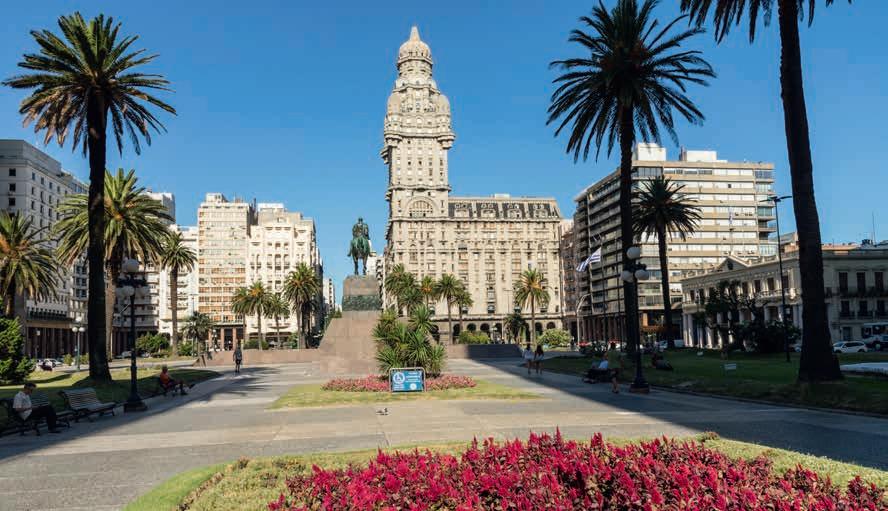

resources in an environmentally responsible manner. It will focus on topics such as Conjugate margin analogues; Petroleum systems; Geology; Geo-tectonics; Technologies applied in exploration and development, and Environmental and Regulation issues faced in the region.
The First EAGE Conference on South Atlantic Offshore Energy Resources taking place in Montevideo, Uruguay, on 20-22 September 2023 should capitalise on the opportunities presented by revived exploratory interest in the conjugate offshore margins of Northern Argentina, Uruguay, and Southern Brazil. The event will provide an excellent platform to exchange knowledge and understand the challenges and big opportunities that this margin hides.
Recent events include the significant light oil discoveries in the Orange Basin, offshore Namibia, associated with the Total Energies Venus-1 and Shell Graff-1 wells, the recent successful licence round offshore Uruguay and the widely announced plan to drill an exploration well in Northern Argentina, which is expected to provide a significant play opener on the American side of the South Atlantic.
The three-day conference aims to develop a comprehensive technical programme that contributes towards allowing the South Atlantic to play an important role in providing future energy
Participants can look forward to keynote presentations from Jose Frey (Equinor), Glauce Santos (Wood Mackenzie), Andreia Leão Owens (EnerGeo), Javier Hernández-Molina (Royal Holloway University of London), Randolph Hiscock (Challenger Energy), Simon Haingura Tobias (Namcor), Richard Whittaker (Consultant Research Geologist), Juan Pablo Lovecchio and Fernanda Raggio (YPF).
Find out more about the event at:
12 FIRST BREAK I VOLUME 41 I JULY 2023 EAGE NEWS
DONATE TODAY!
The EAGE Student Fund supports student activities that help students bridge the gap between university and professional environments. This is only possible with the support from the EAGE community. If you want to support the next generation of geoscientists and engineers, go to donate.eagestudentfund.org or simply scan the QR code. Many thanks for your donation in advance!
The event aims to unlock new deeper plays in an under-explored region.
Montevideo welcomes industry leaders, regulators and academic authorities for a cutting edge three day conference.
Personal Record Interview
All set for a mid-career change
Emma Bell-Davies is moving on from the geoscience community in North Wales where she worked for over 20 years with CGG (previously Fugro Robertson) in various leadership, management and training roles. Now a different business challenge awaits but her enthusiasm for flying, cold water swimming and her creative side will endure along with volunteer work.

Family upbringing in Wales
My parents moved to North Wales from various parts of the UK before I was born. I was brought up in a rural setting with access to the Snowdonia mountains and beaches, so spent much of my time exploring the beautiful landscapes around me.
Fascination with flying
Standing in my garden around the age of seven I used to watch the fast jets and Hercules fly over from the local RAF base. I remember thinking that’s what I want to do when I grow up! With the help of a RAF careers liaison officer, I secured a place at Bristol University Air Squadron (BUAS) which I did alongside my studying for my undergraduate degree. I totalled 45 flying hours over two years, I now volunteer as vice-chair for the BUAS Alumni Association helping graduates smoothly enter the workplace.
What took you to CGG?
Moving back home to North Wales after completing my Master’s degree studies, I was recruited to what was Fugro Robertson, now CGG, as a trainee project manager. It was a door-opening position which saw me progress rapidly to manage the Training team, which delivered geoscience courses globally. I set up a postgraduate diploma with Royal Holloway University of London which we delivered to a cohort of students from Libya in its first year of running. I managed our Geology and Geophysics team, set up and led the Commercial team and latterly headed up a fantastic team of 40 geoscientists who were leading the delivery of our
proprietary and non-exclusive exploration and development studies.
What did work involve?
I’ve travelled the world with CGG — South America, North Africa, extensively throughout the Middle East and Asia. I’ve met many fascinating people and experienced the world over. My work entailed building and delivering strategy, leading and managing teams, developing business, supporting people to grow and develop and delivering change initiatives.
Career highlights to date
I’ve been fortunate to have had a career with CGG spanning nearly 20 years, with lots of great opportunities for me to get my teeth stuck into. I particularly enjoy working with people, I get so much pleasure out of helping people, supporting them to grow and become the best version they can be. I have quite a business brain too and it’s been good to travel seeking out business opportunities and then seeing them to fruition.
Why are you moving on?
We spend most of our time in work, and for me it’s important that this time is enjoyable, rewarding, using my skills and providing growth. My last role in CGG wasn’t ticking these boxes for me so I decided it was time to move on and find something that better aligns with what I want to achieve. I always felt a bit like a round peg in a square hole in our industry, being a people and business manager in an industry dominated by deep technical geoscience skills.
Progress for women?
For sure it’s being made, and it was particularly pleasing to be working for an organisation with a female CEO. However, there’s still work to be done, to inspire and raise leaders from all different backgrounds and belief systems and embed people at all levels of our organisations. For women who choose to have a family it’s a constant balancing act and our organisations can do more to retain and empower women through the various stages of their lives.
Importance of volunteering
I have a strong desire to give my time back to support others, so initially I helped with an after-school club for disabled children, playing, reading and caring for them. More recently I gained a position on the Wales board for the Chartered Management Institute (CMI) where I arrange events and do the social media and communications work. In addition, I support two start up boards through an organisation called Be the Business.
When not working …
I’m an outdoors person, skiing in the winter, walking in the summer. I’m never happier than being in a freezing cold lake in a swimsuit in the middle of winter, pushing myself to do a mile. This last winter season I swam over 13 km between November and March in freezing conditions. Once I’ve warmed up I enjoy making quilts which I give to Project Linus, a charity for terminally ill children. I also turn my hand to crocheting, drilling sea glass to make jewellery, and pottery to name a few of my wind-down practices!
FIRST BREAK I VOLUME 41 I JULY 2023 13 PERSONAL RECORD INTERVIEW
Emma Bell-Davies
Make sure you’re in the know EAGE MONTHLY UPDATE
3 July 2023
Early Registration EAGE Conference on the Future of Energy
9 July 2023
Early Registration EAGE Workshop on Unlocking Carbon Capture and Storage Potential
10 July 2023


Early Registration IOR+2023
31 July 2023
Early Registration EAGE Workshop on Data Science - From Fundamentals to Opportunities



31 July 2023
Regular Registration 2nd EAGE Workshop on Fluid Flow in Faults and Fracture - Modelling, Uncertainty and Risk
31 July 2023 3rd EAGE Workshop on Fiber Optics Sensing for Energy

14 FIRST BREAK I VOLUME 41 JULY 2023 2–4 OCT 2023 THE HAGUE, THE NETHERLANDS
UTILISATION
INNOVATIVE AND OPTIMISED RESOURCE
REGISTRATION DEADLINES
ABSTRACT SUBMISSION DEADLINES
REGISTER NOW! WWW.IOR2023.ORG 2–4 OCT 2023 THE HAGUE, THE NETHERLANDS FIND OUT MORE ON EARTHDOC! 3-7 SEPTEMBER 2023 EDINBURGH, UK REGISTER TODAY & BENEFIT FROM THE REDUCED FEE! EAGENSG.ORG EARLY REGISTRATION DEADLINE: 31 JULY!
INNOVATIVE AND OPTIMISED RESOURCE UTILISATION

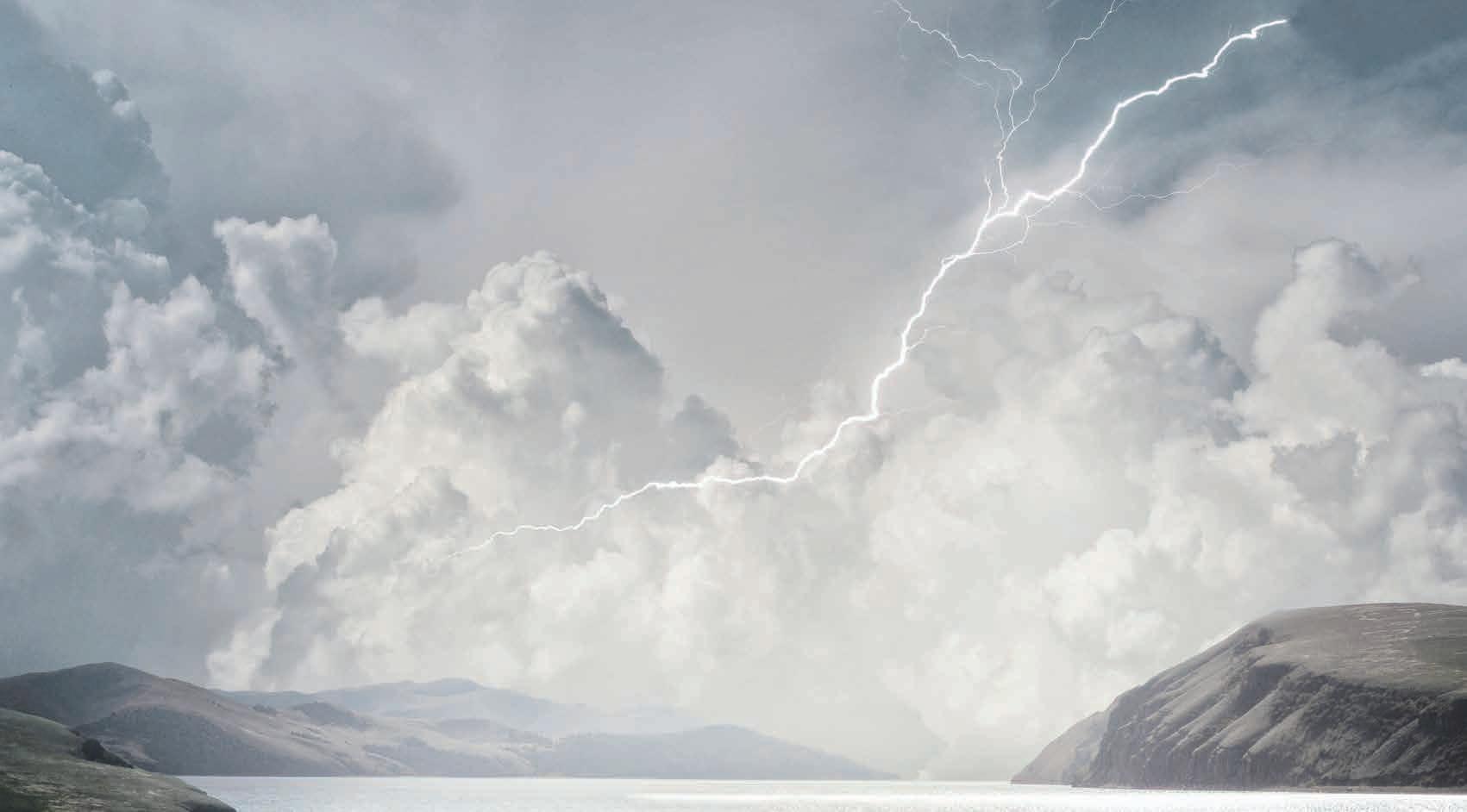





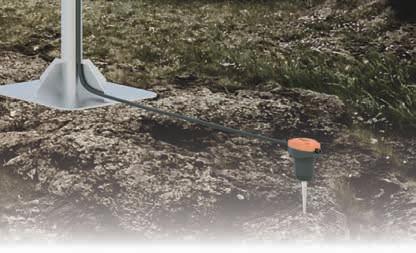










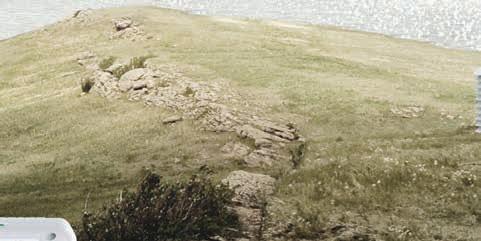
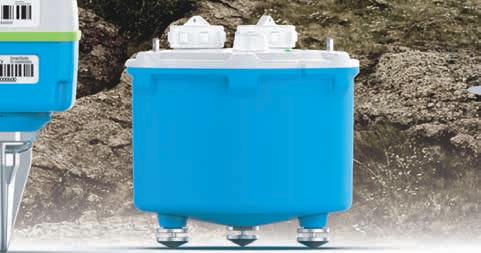
CROSSTALK
BY ANDREW
M c BARNET

The big unknown and unresolved
You would never guess from the well-attended, vibrant EAGE Annual Meeting in Vienna last month that the discipline of geoscience could be in trouble. To say there is an elephant in the room perhaps exaggerates the uncomfortable issue of how a new generation of geoscientists will be recruited and retained in the profession. Yet the phrase comes close to describing the situation if only because in many panel discussions no one could talk convincingly about a looming problem for which so far there is no reassuring solution.
For those curious about its origins, the phrase ‘elephant in the room’ is usually ascribed to Ivan Krylov (1769-1844), a Russian poet, fabulist and prolific epigram author. In an 1814 fable The Inquisitive Man, a man goes to a museum and takes in all sorts of minor exhibits, but fails to notice an elephant. Fyodor Dostoevsky in his novel Demons endorsed the emerging proverb by alluding to his character Belinsky as being ‘just like Krylov’s Inquisitive Man, who didn’t notice the elephant in the museum …’ At some undetermined point, ‘museum’ morphed into ‘room’, and of course the expression should not be confused with ‘white elephant’. That is a whole different story attributed to long forgotten monarchs of Burma. They were apparently in the habit of gifting said white elephants to their courtiers. Although considered a sign of regal approval, they came with a hefty maintenance overhead. This burden could not be avoided for fear of dishonouring the royal benefactor, yet they had no useful purpose.
What is disconcerting in today’s geoscience world is that the ladder into the profession is in danger of being kicked away, most conspicuously in fully industrialised countries. Basically, the number of students opting for geoscience is on the decline threatening a shortage in the employment pool.
More generally this trend seems to reflect a creeping disenchantment with science topics that begins in schools. The UK may be not be typical, but a 2019 international study Trends in International Mathematics and Science Study (TIMMS) revealed a ‘considerable’ decline in attainment in science among 13- and 14-year-olds in England and a similar pattern in the 9-10 year old
cohort. An encouraging sign was the marked improvement in maths attainment in the younger group. However, the familiar difference in gender attitudes showed up with boys being significantly more confident about both maths and science subjects compared with girls.
The same process may not be so prevalent in China and India, countries which are increasingly becoming a source of talent for western energy companies. Top scorers in the TMSS study were largely Asian featuring Taiwan, Hong Kong, Japan, Singapore and South Korea.
Variations in geoscience student numbers can be caused by proximity to a resource base. For example, the Australian Geoscience Council’s Tertiary Education Profile 2002-2021 found that while total enrolments are down, they are less pronounced in resource-intensive states (e.g., minerals and/or hydrocarbons) such as Western Australia, South Australia and Queensland.
According to the American Geosciences Institute (AGI), geoscience, programmes in the United States continued to experience falls in the number of enrolled students and degrees being awarded through the 2021-22 academic year. The Covid19 pandemic is said to have exacerbated continuing negative pressure on enrolments caused by softening of shale oil and gas industry prospects, and a more general drop in students embarking on higher education degrees. AGI says of particular note is the first substantive drop in geoscience graduate enrolments since 1980.
A joint report from the Geological Society of London and University Geoscience UK in 2020 found the number of students studying geology at university had declined year-on-year since 2014, a total decrease of 43%, far outpacing any dip expected purely due to demographics (ca. 9.5% over the same period). Degree-level geoscience qualifications also failed to attract students from a wide range of backgrounds. In the 2018/2019 school year, BAME (Black, Asian, and Minority Ethnic) students made up only 11% of students studying toward their first degree, in contrast to 18% in the physical sciences. There were no similar figures for gender diversity. Enrol-
16 FIRST BREAK I VOLUME 41 I JULY 2023
BUSINESS • PEOPLE • TECHNOLOGY
‘A creeping disenchantment with science topics’
ment in A-level geology (high school) was also declining from a peak of 2240 in 2015 to 1268 in 2019.
The report’s analysis continues to provide an admirable kick-off point for understanding the fundamentals of what seems to be going wrong and what can be done to stem the bleeding. A key finding is lack of public awareness of the many roles that geoscientists play in supporting societal and economic development. Parents, teachers, and higher education advisers – and students themselves – tend to assume that geoscience is solely linked to ‘dirty’ industries or that a geoscience qualification does not lead to professional jobs or careers. Others who are aware of the opportunities offered by geoscience may, the report states, assume that such qualifications are only suitable for students who enjoy and excel at outdoor activities like hiking and camping. Ironically, a panel discussion at last month’s EAGE Annual on this topic bemoaned the fact that the opportunity to travel, once seen as a recruitment draw, no longer really applies as foreign vacations all over the world have become so commonplace.
Defining the geosciences may well be part of the problem, but the lack of identity could also be a benefit. If geoscience is defined as incorporating the core disciplines of geology, geophysics, geochemistry, engineering and resource geology, the report contends that students are exposed to these core concepts throughout their studies in primary and secondary education. But concepts such as plate tectonics, the rock cycle and geomorphology are covered within the curriculum of other subjects such as geography and chemistry potentially leading to confusion over how the core disciplines of geoscience constitute useful qualifications in their own right. The report implies that the interchangeable use of geology, geoscience, and Earth sciences is not helpful. However, you could equally argue that broader, more multi-disciplinary courses, particularly at undergraduate level, may be just what is needed to overcome old stereotypes about what geosciences can offer in the job market.
At the EAGE meeting, platform speakers on the whole sought to put a positive spin on employment prospects for students, young professionals and those in mid-career. Many made the unarguable point that the global demand for oil and gas will fuel the need for geoscientists and engineers for several decades to come, and meeting the technical challenges involved will be exciting. This may be so if potential recruits want to join the industry. Unfortunately, that is not the case right now. In fact it’s exactly the opposite.
What hopefully could transpire in the future is that the need for energy security gains respectability with the younger generation along with the value of natural gas as a transition fuel on the journey to Net Zero. This could facilitate renewed interest in geoscience applications in oil and gas. More cynically, the likely paucity of qualified professionals could push up the pay of those who stick with the business or consider it as a career. Market forces can have an impact. Around 1999/2000 when the oil industry was embroiled
in the turmoil of major consolidation, many bright potential geoscience recruits were lost to the then booming and well remunerated high-tech and financial world
The current conventional wisdom frequently expressed in the recent EAGE panel discussions is that the emerging market for renewables and decarbonisation initiatives such as carbon capture and storage will provide numerous opportunities. This brave new wave of geoscientists will likely be drawn from a wider base of qualifications including more emphasis on digital competency.
This optimistic view is well amplified in the Unesco publication Geoscience in Action: Advancing Sustainable Development written by a group of well-known international geoscientists from industry, academia and government. They say ‘Geoscientists possess a holistic understanding of Earth, studying the physical, chemical and biological components that shape our planet through multiple scales and dimensions, including time. Our ability to understand this fourth dimension allows us to look to the past to help forge a sustainable future through management of our natural resources, conservation of our environment, and protection of our citizens from natural hazards.’ The report maps geoscience disciplines, methods and tools to the Sustainable Development Goals (SDGs) adopted by the United Nations in 2015 as a ‘shared blueprint for peace and prosperity for people and the planet, now and into the future’. It provides examples around the world of how geoscientists, often in collaboration with others, play a significant role in SDG initiatives, citing projects involving clean water, decarbonisation, geothermal, forest ecosystems, etc.
The report does warn that the ‘sustainability of geoscience itself relies on assessment, understanding and communication of the value the various subdisciplines deliver’. The authors hope that Geoscience in Action ‘offers a value proposition we think will help inspire many in forthcoming generations to pursue careers in geoscience ...’
The ‘value proposition’, well intentioned as it is, preaches to the converted. Where such reports come unstuck – one elephant in the room – is being able to come up with a strategy to sell geoscience to the community. The perception of the oil industry as the evil agent of climate change has become so embedded in our society that any associated activities such as geoscience are seriously if not irredeemably tainted.
The other more disconcerting ‘elephant’ is being able to put numbers on the size and timescale of future employment to be generated by energy transition. For all the talk of decarbonisation, especially carbon capture and storage, and the development of promising renewables that can be served by transferable geoscience skills such as offshore wind, geothermal, hydrogen, etc, the scale of job opportunities is currently extremely limited. That may change over time, but for now does not constitute a magnet for science-oriented students choosing a career.
FIRST BREAK I VOLUME 41 I JULY 2023 17 CROSSTALK
‘The ‘value proposition’, preaches to the converted’
Views expressed in Crosstalk are solely those of the author, who can be contacted at andrew@andrewmcbarnet.com.













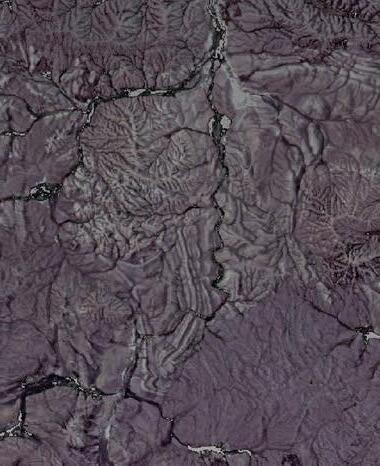
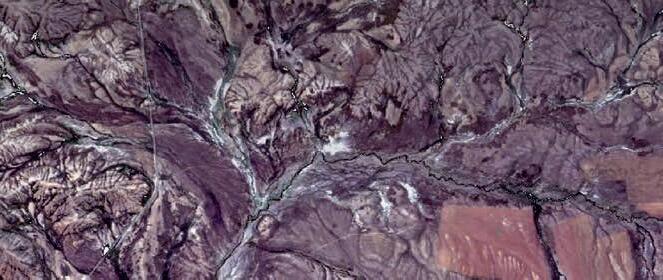


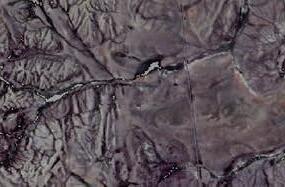




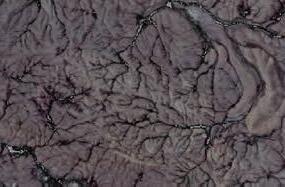

























































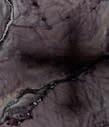

X Astana • X Bogota • X Geneva • X Houston • X Hyderabad • X Kinshasa X Luxembourg • X Madrid • X Ottawa • X Perth • X Pretoria • X Rio de Janeiro • X Toronto Our innovative airborne geophysical technologies allow for efficient exploration reducing environmental impact
Service companies call for closer partnership and a seismic revolution in CCUS
Seismic service companies are eager to become more involved in carbon capture and storage projects but a big shake up in operations and regulations is required, the EAGE Annual Conference and Exhibition heard in Vienna last month.
Delegates said that a seismic ‘technological revolution’ is needed to more effectively monitor and verify reservoirs for CCUS and some seismic companies are calling for new arrangements whereby they can operate as co-licence holders.

Speaking at the Strategic Programme debate, Berit Osnes, EVP New Energy at PGS, said that the company wanted to develop new partnerships over the lifetime of fields.
‘Our services are required but old ways of thinking need to change. We would look to taking a partner role in the licences, particularly in the CCUS line. That should be possible and not seen as a threat.
‘But my experience of talking with clients about partnership is that they want something cheaper. They want to share
the risk and not the price and that has to change. We need to find collaborative ways of working and regulations to allow newcomers into the market. We are too formulistic at the moment. We need to get a lot more smaller companies involved and develop more flexible models so that companies and investment start-ups can play different roles. but the project management needs to be really strong and risk sharing is a big challenge.”
The UK is among countries holding licensing rounds this year for CCUS projects worth billions of dollars (see page 20), but Carel Hooijkaas, EVP acquisition at TGS, said there is a lot more to do to develop seismic technology for monitoring CCUS reservoirs.
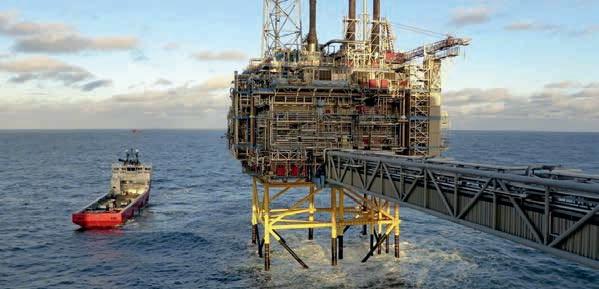
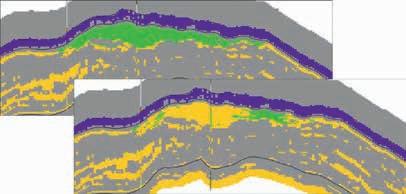
‘It’s dynamic and challenging and not easy to enter. We are developing the technology to do CCS at scale. It’s coming but there’s a lot that needs to be done to make it more cost effective,’ said Hooijkass, who added that TGS was in ‘very active discussions with our customers’ to make investments in seismic technologies in partnership.
Sophie Zurquiyah, CEO of CGG, said that young geoscientists with ‘bright minds’ would could have an exciting career in store: ‘Reservoir characterisation of those reservoirs is still quite difficult. These things have to be monitored for the long term and it has to be cost effective. We need to find the right way.’
Erling Vagnes, SVP subsurface exploration production international at Equinor agreed that closer collaboration was essential to develop seismic technologies. ‘There is funding and a willingness to collaborate. There used to be fierce competition but now we need enough companies to collaborate and spread the risk. We need to invest in digital AI to get to what’s meaningful more quickly. Breakthroughs in cataloguing will be super important and there is a long way to go on that.’
Herlinde Mannaerts-Drew, VP subsurface transformation and CCUS at BP said: ‘The current seismic set up is not going to work. We need to look at the role of unmanned vessels and there is a big role on digital efficiency.’
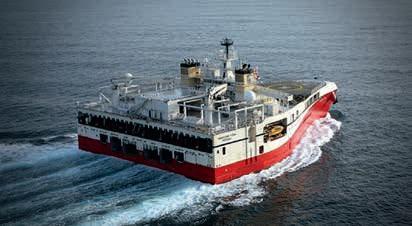
John Ardill, VP-head of global exploration at ExxonMobil Upstream said: ‘There will be massive technological evolution. We need the right datasets and that requires a huge amount of work in the next five to ten years.’
Delegates also agreed that government funding alone is not enough and a ‘functioning market’ for carbon capture, using carbon trading and CCUS tax credits for example, will be crucial.
Ayed Al-Qahtani, director research division at OPEC, said that it was important that politicians become ‘more educated’ about CCUS and that countries have to ‘educate the people’.
FIRST BREAK I VOLUME 41 I JULY 2023 19
20
PGS wins Barents Sea contract
24
Fugro wins German offshore wind project
26 HIGHLIGHTS INDUSTRY NEWS
Ikon upgrades 4D inversion tool
UK offers 20 carbon storage licences
The UK has offered 20 carbon storage licences in rocks deep below its surrounding seas, including some near Aberdeen, Teesside, Liverpool and Lincolnshire.
The North Sea Transition Authority (NSTA) has launched the UK’s first-ever carbon storage licensing round with applications closing in September. In total the 20 licences in 13 areas are around 12,000 km2 in size.
Once the new storage sites are in operation – and in some cases first injection could come in as little as six years – they could make a significant contribution to the aim of storing up to 30 million tonnes of carbon dioxide (CO2) per year by 2030, approx. 10% of total UK annual emissions, which were 341.5 million tonnes in 2021, said the NSTA.
The offers come after the UK’s announcement of £20 billion in support of developing carbon capture, usage and storage, starting with projects in the East Coast, Merseyside and North Wales.
The licensing round is likely to be the first of many as up to 100 CO2 stores could be needed for the UK to meet the net zero 2050 target, said the NSTA.
The licences include a range of geological store types and were selected after
a process which considered attributes such as geology, proximity to existing infrastructure – as is found at Bacton off the coast of Norfolk – and links to industrial clusters.
The need to share offshore space with other users of the seabed such as wind developers and petroleum operations was also considered as part of the NSTA’s licensing process, recognising the need for both early engagement and continued collaboration between existing licence and leaseholders where an area of the seabed is a key resource for different sectors.
Once a licence has been awarded by the NSTA, the licensee also needs to obtain a seabed lease from The Crown Estate or Crown Estate Scotland before a project can progress. Further consents and approvals will be required ahead of any appraisal activity taking place on carbon storage licences.
Stuart Payne, NSTA chief executive, said: ‘Through our engagement with applicants, we will have committed work plans in place such as seismic surveys and drilling of wells – we are working with industry to move at real pace.’
Lord Callanan, minister for energy efficiency and green finance, said: ‘These new licences, together with fresh powers granted to NSTA within the landmark
PGS wins contracts in Barents Sea and Mediterranean
PGS has won a contract from an independent energy company for a 40-day 3D survey in the Barents Sea to be acquired by the vessel Ramform Hyperion.

The company has also signed a contract with an independent energy company for a 3D survey in the Barents Sea to be acquired by Ramform Hyperion. The project is about to start and duration is approx. 40 days.
Meanwhile, PGS has announced that a contract in South America awarded in March 2023 has been revoked by the client.
Ramform Titan was contracted to mobilise for the 3D exploration survey in June with acquisition to complete in August. After successful completion of an
acquisition campaign in Namibia in late May, Ramform Titan was steaming to the survey area in South America when the notice of termination was received.
‘PGS is in dialogue with the client relating to compensation and/or alternative work for the vessel,’ said PGS. ‘The dialogue with the client is constructive and the aim is to minimise any financial impact on PGS. It is, however, a risk that the vessel will be idle for up to 2-3 months.’
Finally, PGS has won a 3D exploration acquisition contract in the Mediterranean from a big international energy company. Ramform Hyperion is expected to mobilise for the 70-day survey late in the third quarter.
Energy Bill, will develop our most comprehensive picture yet of the UK’s carbon capture and storage potential, strengthening our energy security and cutting emissions.’
The seabeds around the UK contain rock formations with the potential to hold up to 78 billion tonnes of carbon dioxide. That is the equivalent of two centuries’ worth of the UK’s emissions today –and one of the biggest storage capacities in Europe, the NSTA said. The carbon capture and storage opportunity could be worth £100 billion ($125 million) to the UK’s energy supply chain by 2050, it added.
Offshore Energy UK’s (OEUK) chief executive officer, David Whitehouse, said: ‘The UK’s offshore oil and gas industry has the expertise needed to make carbon storage a success and these licence awards can showcase our heritage of energy production skills to the world.
‘But we will need 100 such sites or more, and the Track 1 and 2 clusters to be accelerated, if we are to reach net zero – so we mustn’t stop here. We look forward to the UK government’s continued support for CCUS to make sure the UK secures a leadership position.’
‘There is increasing exploration interest in the Mediterranean after recent discoveries in this prolific gas province. This award builds on our successful campaign from the previous season,’ said PGS president and CEO Rune Olav Pedersen.
20 FIRST BREAK I VOLUME 41 I JULY 2023 INDUSTRY NEWS
PGS vessel Ramform Titan.
TGS and Kongsberg agree to collaborate on digital solutions for offshore wind


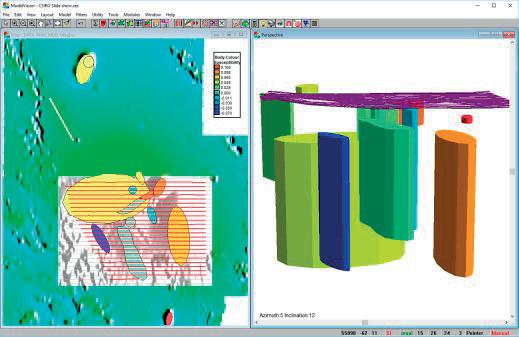
‘We have a shared ambition with TGS that far more effective use of data and digitalisation will be key to drive and sustain faster scaling of offshore wind. We believe that combining high-quality energy data with our solutions for energy industries digitalisation will assist developers to collaborate better and be more productive. Moreover, ‘digital by design’ field development will underpin a broader application ecosystem and successively unlock additional value propositions to developers,’ said Konsberg in a statement.
TGS and Kongsberg have agreed to jointly develop integrated data and digital solutions for the offshore wind industry. The aim of the partnership is more efficient use of data and digitalisation to drive faster scaling of offshore wind.

TGS will offer expertise in energy data acquisition, asset management, high-power computing and data analytics. Konsberg will deploy its sensors, marine robotics, automation, industrial digital twins and collaboration tools.
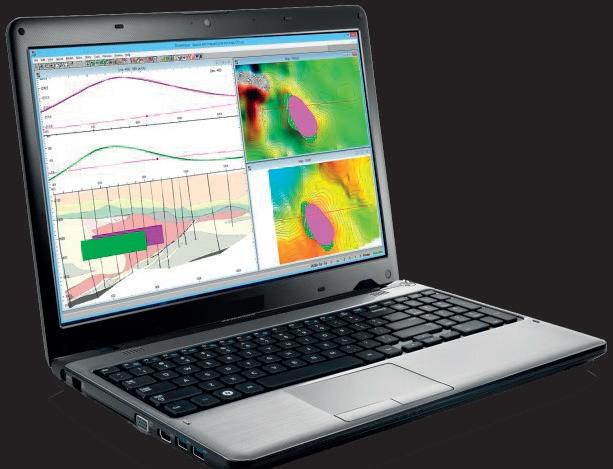
‘The process of prospecting, site assessment, and field development needs to be more efficient. Responding to this need, TGS and Konsberg aim to combine high-quality data with digital solutions that are accessible, modular, scalable, and support an open ecosystem,’ said TGS in a statement.
Since 2021, TGS has developed its offshore wind solutions to include market intelligence from 4C Offshore, wind and metocean measurements, analytics platforms, subsurface data for site assessment, and data management. TGS has a client base of more than 450 companies focusing on offshore wind.
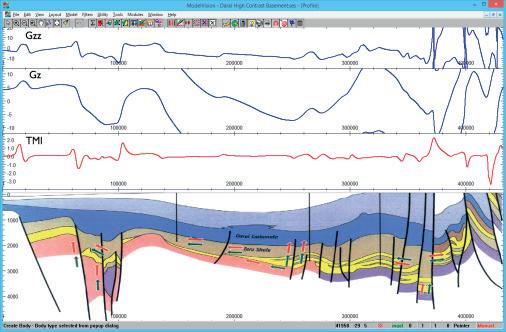

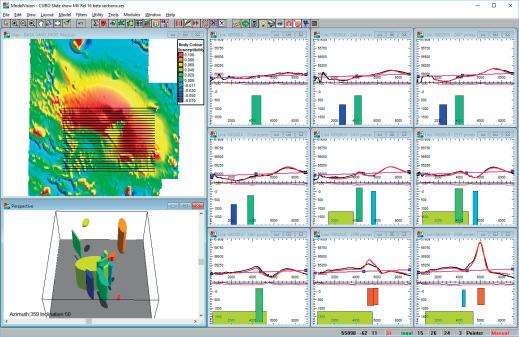
Kongsberg engaged in design of ships and marine systems for offshore wind as well as subsea data acquisition sensors and solutions. In 2022 Konsberg established Kongsberg Renewables Technologies to accelerate organic and inorganic growth further. Recently, Kongsberg Digital acquired a majority ownership in FutureOn, which offers a cloud-based platform for offshore energy field development (FieldTwin), delivering collaborative working environments with access to distributed data and geospatially accurate data visualisation.
ADNOC launches Decarbonisation Technology Challenge
Abu Dhabi’s state oil company ADNOC has launched a global competition to find innovations to reshape the global energy landscape. The Decarbonisation Technology Challenge is being supported by Amazon Web Services (AWS), bp, Hub71, and the Net Zero Technology Center.
Ten finalists will be invited to pitch their innovations to a panel of judges in
December 2023. Winners will receive up to $1 million in piloting opportunities with ADNOC. Scale-up companies specialising in carbon capture utilisation and storage, new energies, oil and gas emissions reduction, digital applications and advanced materials for decarbonisation and nature-based solutions are encouraged to apply.

FIRST BREAK I VOLUME 41 I JULY 2023 21 INDUSTRY NEWS All sensors Processin g 3D modelling 3D inversion Visualisation Analysis Utilities Minerals Petroleum Near Surface Government Contracting Consulting Education ModelVision Magnetic & Gravity Interpretation System Tensor Research support@tensor -research.com.au www.tensor-research.com.au Tensor Research1021.indd 1 03/09/2021 08:18
TGS CEO Christian Johansen, left, and Konsberg president and CEO Geir Håøy.
Photo: Fartein Rudjord, TGS/Kongsberg.
Polaris wins 2D survey in Zimbabwe
Polaris Natural Resource Development has won a contract from Invictus Energy to carry out an infill 2D seismic survey at the Cabora Bassa project in Zimbabwe.
The survey will cover a minimum of 400-line km in the eastern portion of EPO 1848 and 1849 to mature multiple leads (Mopane, Musuma, Machabel and Mahogany) along the proven play to the east of, and on trend with, Mukuyu. The survey will also cover additional leads along the highly prospective Basin Margin play (Mimosa and Mukwa).
Leads being targeted in the 2D survey display seismic amplitude anomalies such as ‘flat spots’ (often indicative of hydrocarbon contacts) and velocity interval slowdowns.

The project will give insights into a forthcoming phase two exploration campaign. ‘Polaris carried out the successful CB21 2D seismic survey in 2021, which helped to refine the drilling programme for the play opening Mukuyu-1 well that proved a working hydrocarbon system
in the Cabora Bassa Basin and the presence of light oil, gas-condensate, and helium,’ said Scott Macmillan, managing director of Invictus Energy.
‘The CB21 seismic survey also firmed up the potential for multiple stacked hydrocarbon-bearing zones in the Basin Margin play, which has been independently estimated to hold nearly 1.2 billion barrels in prospective oil resources,’ he added. ‘This fresh round of high-resolution 2D seismic data is aimed at maturing a number of already identified leads mapped within our Cabora Bassa acreage to drillable prospects.
The leads, mapped on legacy seismic data, demonstrate amplitude support and anomalies consistent with hydrocarbon-bearing intervals encountered in Mukuyu-1, said Invictus. Preparations are continuing for the Mukuyu-2 appraisal well, the company added.
Polaris’ seismic campaign will draw on its experience from the successful CB21 Seismic Survey acquisition, which
helped to confirm a working hydrocarbon system in the Cabora Bassa Basin.
Polaris is Canada’s oldest seismic company and has conducted more than 1200 seismic projects since 1996. It has conducted more than 25 projects in East Africa.
Polaris president and CEO Bill Mooney, said: ‘We will be again deploying the STRYDE nodal system to provide high-resolution data with the lightest seismic footprint possible.’
The Mukuyu-2 well is scheduled to spud in Q3 2023. Mukuyu-2 will target multiple hydrocarbon (light oil and gas-condensate) bearing intervals encountered in the Mukuyu-1/ST1 well in the Upper Angwa and Pebbly Arkose formations with the aim of confirming a gas-condensate discovery.
The well will also aim to test the Post Dande horizon away from the major east-west fault on the southern flank and the remaining Upper Angwa formation.
22 FIRST BREAK I VOLUME 41 I JULY 2023 INDUSTRY NEWS TU Delft.indd 1 14/06/2023 08:47
ADVERTISEMENT
PXGEO launches autonomous OBN handling system
BRIEFS
Shearwater has won 4D surveys from TotalEnergies over the Laggan, Tormore, and Edradour fields with an option to extend to the Glenlivet field. The surveys, due to complete this month, are being conducted by the IsoMetrix-equipped vessel Amazon Conqueror.
PXGEO has launched the Manta Ray Ocean Bottom Node (OBN) handling system using Hovering Autonomous Underwater Vehicles (HAUV) capable of deploying and recovering nodes significantly faster and with better precision than traditional methods.

‘MantaRay allows for complete survey design flexibility providing optimal imaging to eliminate geological risk,’ said PXGEO. ‘Autonomous, tetherless operation brings unparalleled efficiency and preprogrammed autonomous mission planning ensures fast and accurate node placement. MantaRay minimises seabed impact and reduces crew and operational exposure while bringing results faster to the client.’
PXGEO has developed the handling system in collaboration with Saab based
on its Sabertooth platform, capable of operating in water depths ranging from 4 m to 3000 m. With its fully electrical design and removing the requirements for umbilicals and tethers, MantaRay offers unmatched operational reliability.
Tony Bowman, CEO of PXGEO, said: ‘We are very excited to present MantaRay with its unmatched effectiveness, efficiency, and reliability it will revolutionise the OBN industry and aligns with PXGEO’s commitment to United Nations Sustainable Development Goals. We expect to have the initial fleet of MantaRays in full operation by the end of the year.’
Görgen Johansson, Saab head of dynamics, said: ‘Together with PXGEO, we are taking the step to make offshore seismic data acquisition fully autonomous.’
Sercel deploys 508XT land acquisition system in North Africa
The equipment will be deployed on a 3D mega-crew project in harsh terrain and desert conditions in North Africa and further strengthens Sercel’s well-established presence in this region.
The leader of the UK’s main opposition party Sir Keith Starmer has pledged to ban all new North Sea oil and gas licences as he prepared to unveil his party’s net zero policies in June. The Labour Party is currently well ahead in the opinion polls with a general election expected to be held next year.
CGG has won a contract from OMV to continue operating a dedicated centre at its head office in Vienna for an initial three-year period. During this time, OMV will continue to benefit from in-house access to CGG’s seismic imaging and reservoir characterisation technology, as well as the support of its multi-disciplinary geoscience expertise to support CCUS, geothermal, and mining and minerals.
Seabird Exploration has signed an OBN source contract for the Eagle Explorer in the eastern hemisphere. The two-month contract will commence in June 2023 directly after completion of a current 2D project.
PGS has won a seismic acquisition contract for carbon storage offshore Norway from an independent energy company. The one-month project is scheduled to start in September and has a duration of approximately one month. The company successfully completed four carbon storage jobs in 2022.
Sercel has sold a 60,000-channel 508XT land acquisitionn system and 25 VE464 advanced digital vibrator control sets to a major North African geophysical services provider.

Emmanuelle Dubu, Sercel CEO, said: ‘This contract is the latest in a long series of awards highlighting our strong collaboration with our client and positioning our 508XT system as the benchmark for seismic surveys in North Africa.’
BNP Paribas has confirmed that it will will reduce its financing of oil exploration and production by 80% by 2030. It will no longer finance new oil fields (including project financing, RBL and FPSO). It will phase out financing to independent oil companies which is intended to support oil production (corporate financing or RBL).
FIRST BREAK I VOLUME 41 I JULY 2023 23 INDUSTRY NEWS
TGS and SLB partner on OBN project in US Gulf of Mexico
TGS has agreed to collaborate with SLB on the Engagement 4 Ocean Bottom Node (OBN) multi-client acquisition in the US Gulf of Mexico.
Acquisition of the 152 OCS block sparse OBN survey is underway, extending contiguous data coverage from prior phases into western Green Canyon. ‘In an area known for increasingly challenging
subsurface imaging, the application of full-waveform inversion (FWI) utilising ultra-long offsets will provide a dataset that represents a step-change in the conceivable geological and geophysical interpretation,’ said TGS. Fast-track products will be made available in Q4 2023 with final processing completion scheduled for H2 2024.
Kristian Johansen, CEO at TGS, said: ‘We are excited to bring our sixth multi-client OBN project to fruition in the US Gulf of Mexico. Ever-positive, proven imaging results from prior phases support continued application of these advanced seismic techniques, delivering significant exploration value to our clients.’
Fugro wins offshore wind geophysical survey in German North Sea
Fugro has won a geophysical survey contract for two offshore wind farm sites in the German exclusive economic zone

(EEZ) in the North Sea from the country’s Federal Maritime and Hydrographic Agency, the Bundesamt für Seeschifffahrt und Hydrographie (BSH).
In collaboration with Fraunhofer Institute for Wind Energy Systems (IWES), Fugro’s Geo-data will be integrated with its ultra-high resolution multichannel seismic data (UHR MCS) and used by BSH to develop geological models of the offshore sites and support subsequent geotechnical investigations.
Fugro will mobilise a survey vessel to perform high-precision positioning, sub-bottom profiling recording and interpretation. Additionally, Fraunhofer IWES will be responsible for conducting the multichannel seismic survey, dedicated data processing and interpreta-
tion. A dense data raster will generate 2393 km survey lines. The sub-bottom profiler data provides detailed structural imaging of sediments up to 15 m below the seafloor while the UHR MCS data penetrates more than 100 m to capture images of small sedimentary bodies and deep valley structures carved by glaciers and filled with younger sediments.
The final result will be a preliminary subsurface model that can be used as the basis for future geotechnical survey campaigns as well as to reduce the risk for the future installation of the windfarms.
The sites are due to be auctioned in the coming years as Germany aims to achieve a target of 30 GW wind-generated energy by 2030.
PGS offers PSDM Barents Sea data
PGS’ 3D GeoStreamer PSDM data is available to assess prospective western Barents Sea areas in this year’s APA round.
The Harstad Basin has a very complex burial history, including subsidence, uplift, and chemical reaction. Using an integrated workflow on the PGS17011NBS dataset, PGS quantitative interpretation experts have revealed structure and petroleum potential in available blocks.
‘With very few wells, access to a high-quality seismic image, velocity model, and rock physics model integrating the burial history of the area is invaluable for evaluating, predicting, and assessing the uncertainties on reservoir presence, reservoir quality as well as hydrocarbon opportunities,’ said Cyrille Reiser, global quantitative interpretation manager at PGS, who added that an FWI velocity model has been instrumental in estab-
lishing a correct estimation of the erosion occurring at various stratigraphic levels. Deep imaging has enabled the mapping of the source rock in the Hekkingen Late Jurassic Shale, after the identification of the Base Cretaceous Unconformity. The source rock is located within the late oil and gas window, in the basin and close to the platform, which may indicate good exploration potential in well-charged Jurassic and Paleocene reservoirs.
24 FIRST BREAK I VOLUME 41 I JULY 2023 INDUSTRY NEWS
Norway launches APA 2023
fined areas. Blocks or parts of blocks that become available less than three months prior to the application deadline, cannot be applied for.
Land Seismic Noise Specialists

Norway has announced APA 2023 , encompassing the predefined areas with blocks in the North Sea, Norwegian Sea and Barents Sea.
The deadline to apply is 23 August 2023. Awards are expected during the first quarter of 2024.
The predefined areas have been expanded by 78 blocks in the Barents Sea and 14 blocks in the North Sea. Applications can be submitted for all available blocks or parts of blocks within the prede-
If licences for CO2 storage are awarded before the application deadline in an APA round, this acreage will no longer be available for application in APA. Blocks, or parts of blocks, that overlap with the proposal to change SVO Havområdene rundt Svalbard and the proposal to change SVO Tromsøflaket are being announced with certain reservations. If the geographical extent of these SVOs are changed by the Norwegian parliament in its processing of the management plan in 2024, the current terms and conditions for petroleum activities in the two respective SVOs will also apply for any permits in relevant blocks awarded in APA 2023 in the Barents Sea.
The maps show licenced acreage within the APA boundaries as of 10 May, 2023. These areas can change during the application period. The NPD’s interactive FactMaps contain daily updated information showing the current areas available for application.
Large 3D survey is completed in Namibia’s Orange Basin
Sintana Energy and Custos have completed a 6593 km2 3D seismic survey over and around Petroleum Exploration Licence 87 in Namibia’s offshore Orange Basin.
The acquisition exceeds the initially planned area by more than 1500 km2 ‘Initial acquisition results indicate a high-quality dataset can be expected,’ said Sintana. Early processed results are expected in August 2023.
Meanwhile, Woodside Energy has the option to acquire a 56% participating interest in PEL 87 in consideration for, among other things, paying the full cost of a 3D seismic shoot. Woodside has 180 days after delivery of the survey to exercise its option. If the option is exercised, Woodside has agreed to enter a farmout agreement whereby it will carry existing joint venture partners during the drilling
Our Full-Wave Correction (FWCTM) Technology Can Address Surface Scattering and Improve Your Challenging Seismic Data

of the first exploration well. Custos and Sintana would retain a 15% interest in PEL 87.
PEL 87 includes the very large Saturn turbidite complex that has been mapped. This complex shares many geologic characteristics and is on-trend with the recent discoveries by TotalEnergies and Shell.


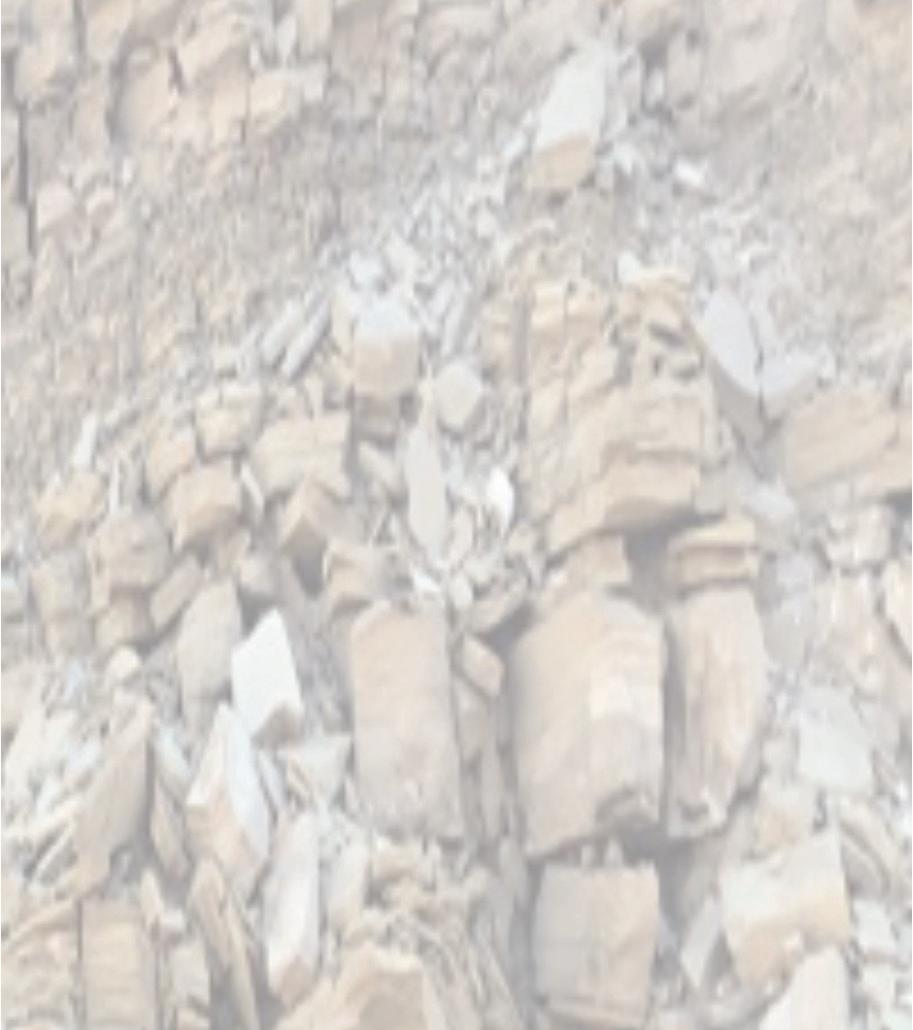
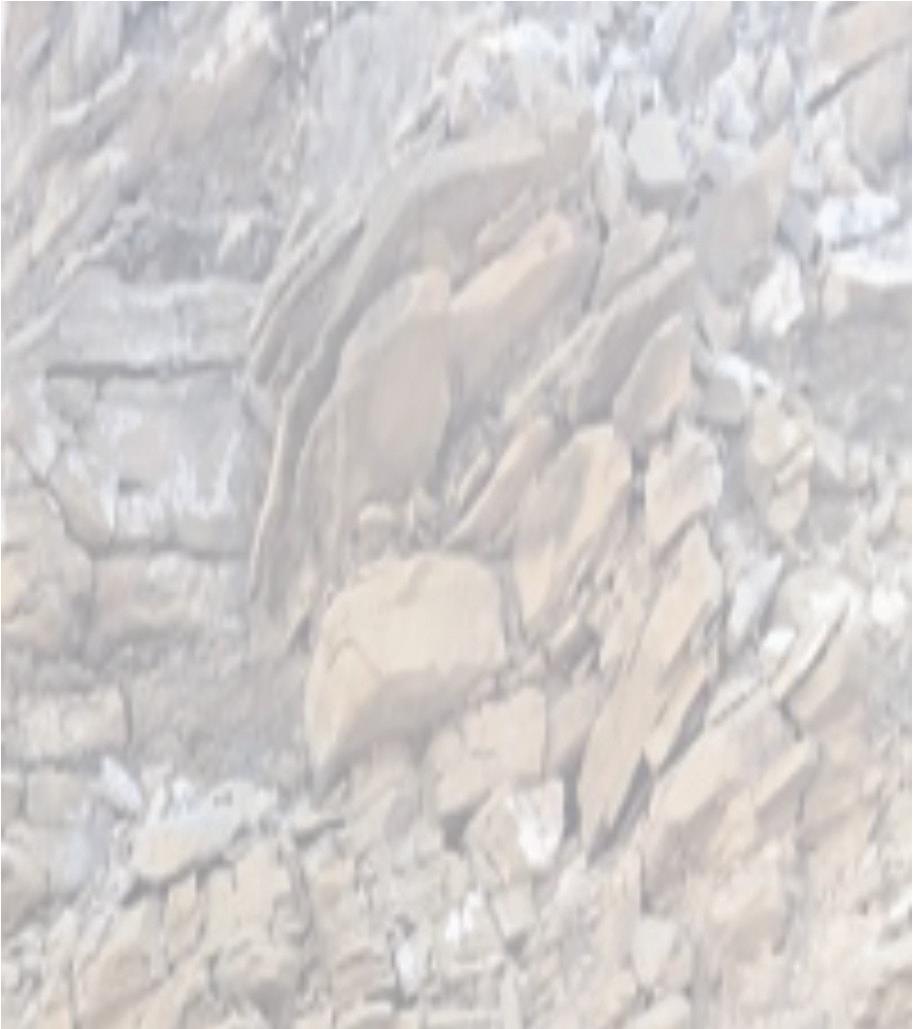
‘We are very pleased by the pace and data quality of this seismic program over PEL 87,’ said Knowledge Katti, chairman and CEO of Custos, and a board member of Sintana. ‘We are confident that the results will further demonstrate that we are on the same trend as the recent in-basin discoveries by Shell and Total, and highlight the Saturn Turbidite Complex as a significant, world-class deep-water oil opportunity,’ he added.
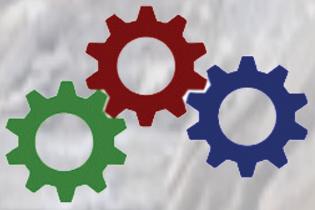

FIRST BREAK VOLUME 41 I JULY 2023 25 INDUSTRY NEWS
N��� ���������� �������
Edge Island with outcropping Triassic source rock of the Steinkobbe-/Botneheia Formation.
Photo: Bjørn Anders Lundschien/NPD.
Ikon Science upgrades 4D inversion tool
Ikon Science has launched its latest 4D inversion tool Time-Lapse Ji-Fi app that offers complete fluid tracking capabilities for production and injection scenarios.
The seismic and well data investigation tool is featured in RokDoc 2023. ‘Exploration and production activities and quantitative interpretation workflows must produce not only a precise prediction of properties but also a good understanding of uncertainties. Ikon’s Time-Lapse Ji-Fi app offers complete 4D fluid tracking capabilities for production and injection scenarios and is applicable in most hydrocarbon production campaigns – and Carbon Capture Utilization and Storage (CCUS) efforts,’ said Ikon Science.
PGS offers latest GeoStreamer seismic data in the Norwegian Sea

A PGS GeoStreamer X product is providing high-resolution data to resolve imaging challenges in the Norwegian Sea, revealing remaining potential and derisking future drilling opportunities.
The 2022 GeoStreamer X program is the latest addition to PGS’ Norwegian Sea library, combining multisensor broadband fidelity and wide-tow source efficiency, with multi-azimuth illumination, said PGS.
The multi-azimuth data enables the resolution of the imaging challenges present on the Halten/Dønna Terrace and aims to reveal the remaining potential in the region.
dataset with improved resolution, reliable amplitudes, better continuity of events and definition of faults, leading to better interpretability.’
New rock physics models unlock functionality to a larger family of geologic plays and workflows, additional sand, shale and carbonate rock physics models that capture compaction, and clay evolution have been added to the RokDoc and rock physics modelling function (RPML) libraries, added the company. Also, a new fractured-carbonate rock physics model for feasibility and prediction of fracture density streamlines data sharing and integration with geomechanics workflows.
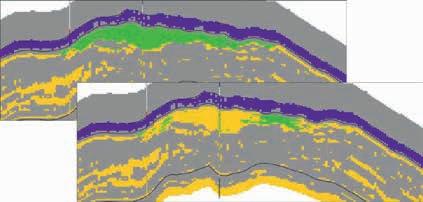
Deep QI machine learning and rock physics functions automation is expanded with XGBoost, which is now combined with grid search for parameter tuning. The machine learning property prediction and automated RPML algorithm are further augmented to directly calibrate mineral volumes in rock physics models.
Meanwhile, Ikon Science has updated its subsurface knowledge management software, Curate 2023.2, which includes a preview option for datasets, the ability to colour-code wells on map views and an upgraded search and filter function in the Data Explorer app.
An early output volume is available, utilising data from the new 2022 acquisition and existing GeoStreamer data reprocessed in 2016. The GeoStreamer X stack gives a good indication of the uplift generated with a multi-azimuth GeoStreamer X product in the Norwegian Sea, added PGS. The full-integrity PTDM volume will be available in December 2023.
‘Innovative acquisition combined with a state-of-the-art depth imaging flow improves data quality,’ said PGS. ‘Interpreters and geoscientists get a
The GeoStreamer X full-stack section is depth migrated and includes the Sør High, Dønna Terrace, Ytreholmen Fault Zone and crosses the Urd and Verdande areas. The section represents the dominant Lower Cretaceous (Lysing and Lange) and Jurassic plays (Fangst and Båt Group). Area 1 illustrates an example of fairly shallow and highly segmented Jurassic fault blocks on the Sør High while area 2 displays the Lower Cretaceous basin fill underlain by deeply buried Jurassic fault blocks showing variable preserved Early and Middle Jurassic sections in the Dønna Terrace.
Sercel sells 6000 OBN nodes to Sinopec
Sercel has made a big sale of its GPR300 seabed nodal solution to Sinopec. More than 6000 nodes are being deployed in the Bohai Sea off the east coast of mainland China.
‘Based on Sercel’s QuietSeis MEMS technology, the GPR300 delivers unprecedented broadband signal sensing capability and fidelity, and ultra-quiet performance to enable best-in-class subsurface imaging and outperforms conventional OBN equipment. With its compact and
lightweight design, the GPR300 is easy to use whatever the deployment mode.’
Emmanuelle Dubu, Sercel CEO, said: ‘On the strength of our in-depth knowledge of the seismic industry and the greater opportunities we see node acquisition bringing in terms of enhanced data quality and insight for client decision-making, we believe GPR300’s design and configuration is the optimal solution for the ocean bottom node market.’
26 FIRST BREAK I VOLUME 41 I JULY 2023 INDUSTRY NEWS
Data elucidates potential in the region.
TGS deploys offshore wind measurement tool in Norway’s Utsira-Nord zone
TGS has started Norway’s first LiDAR buoy measurement campaign to support offshore wind development.
The campaign’s first floating LiDAR buoy will be deployed in the Utsira-Nord zone and conduct wind, metocean, and environmental measurements to aid decision-making for the three floating wind project areas to be awarded in Norway’s first floating wind lease round.
The TGS buoy will deliver data over a 12-month measurement campaign with the option to extend for an additional year. In addition to wind speed measurements, the data package includes metocean and environmental data such as significant wave heights, ocean current profiles, and acoustic monitoring of birds and bats.
Data will be continuously streamed, quality-controlled, and available to customers daily on a multi-client basis through the Wind AXIOM platform, TGS’ site evaluation and wind data analytics tool.
Jan Schoolmeesters, EVP of Digital Energy Solutions at TGS, said, ‘The
data, combined with analytics through our Wind AXIOM platform, are expected to significantly enhance decision-making and risk-reduction.’
Norway launched its first offshore wind lease round in March. Applications for leases are to be submitted by early September, with awards expected in December.
Utsira Nord marks the fifth global deployment of TGS multi-client floating LiDARs but is the first aimed at floating wind development, being situated in approx. 270 m of water. The previous four are active off the US East Coast in the emerging wind energy lease areas, with more on the way.
At Utsira Nord, TGS will utilise a LiDAR buoy provided by Eolos, which is validated to Stage 3 criteria of the Carbon Trust’s Offshore Wind Accelerator Roadmap for Commercial Acceptance. In addition, TGS will deploy a Datawell Directional WaveRider buoy to cross-validate the fatigue limit state (FLS) wave response and measurements.
STRYDE provides 20,000 nodes in Poland
STRYDE has won a contract to supply more than 20,000 seismic receiver nodes to enable one of Europe’s largest oil and gas exploration projects in Poland.
Geopartner Geofizyka has invested a six-figure sum into STRYDE’s equipment as part of a 3D seismic survey for oilfield exploration and development programme by a major Polish oil and gas operator.
Seismic acquisition of the 300 km2 area, expected to be one of Europe’s biggest developments, was due to complete in May 2023. The company previously invested in 1500 nodes for another project in August 2022.
STRYDE’s nodes will be used to perform a 3D seismic data acquisition working alongside vibroseis trucks that will generate seismic signals which are
then measured by STRYDE Nodes and processed.
Amie Foster, global account manager at STRYDE said: ‘Our miniature nodes have allowed Geopartner Geofizyka to reduce crew size and vehicles on-site, which in turn has resulted in a lowered environmental impact, less operational logistics, and rapid access to seismic data.’
CEO of Geopartner Geofizyka, Jecek Slowinski, added: ‘Having already worked with STYRDE technology to acquire seismic data in Poland we have been impressed by the quality of the data acquired by such a low-cost, fully autonomous seismic system.
‘Availability was crucial and STRYDE could deliver the equipment immediately, enabling us to mobilise the crew and technology quickly.’
ENERGY TRANSITION BRIEFS
Adnoc and Baker Hughes have announced an agreement to accelerate the development of technology solutions for green and low-carbon hydrogen, as well as graphene. The companies will study and pilot decarbonisation technologies Baker Hughes has invested in across the graphene, methane pyrolysis and next-generation electrolysis spaces.
Aker Carbon Capture and Carbfix have extended for two years their partnership to explore full carbon capture and storage (CCS) value chains.They will work together on point source capture and storage volumes up to 1 million tonnes CO2 per year. The Carbfix technology involves dissolving CO2 in water and injecting it into porous basaltic stone formations, where natural processes cause the CO2 to form stable carbonate minerals within two years.
The Danish Energy Agency (DEA) has awarded Ørsted a 20-year contract for carbon capture and storage (CCS) at the ‘Ørsted Kalundborg Hub’. Ørsted will capture and store 430,000 tonnes a year of biogenic CO2 at its Asnæs Power Station in Kalundborg in western Zealand and at the Avedøre Power Station’s boiler in Greater Copenhagen. The CO2 will be shipped to the Northern Lights storage reservoir in the Norwegian North Sea.
ExxonMobil has signed a carbon capture and storage agreement with Nucor Corporation, one of North America’s largest steel producers. It will capture and, transport and store up to 800,000 metric tonnes per year of CO2 from Nucor’s manufacturing site in Convent, Louisiana.
CNOOC has commissioned China›s first offshore CCS demonstration project as part of the Enping 15-1 oilfields development in the Pearl River Mouth Basin, 190 km southwest of Hong Kong, with an average water depth of 80 m. CO2 produced from the oilfield will be injected into the saline water layer at a depth of around 800 m under the seabed. The project can store over 1.5 million tons of carbon dioxide.
FIRST BREAK I VOLUME 41 I JULY 2023 27 INDUSTRY NEWS
STRYDE wins $1 million contract to supply land seismic nodes in Nigeria

Its nodes will be utilised on a 3D seismic survey conducted by Nigerian geoscience provider ATO Geophysical. The survey is due to start in Q2 2023 and will be the first commercial deployment of STRYDE’s Nimble system in the country.
STRYDE, who claim to have created one of the world’s smallest and lightest seismic nodes, will enable ATO to deliver seismic data for exploration of new reservoir locations in the grasslands and marshlands of Nigeria for a local oil and gas operator.
the seismic acquisition programme,’ said STRYDE in a statement.
The supply of its ‘Nimble’ node management solution will enable further efficiencies on the survey to be unlocked by allowing ATO to rotate up to 2160 nodes per day, enabled by the system’s capability to simultaneously charge and harvest data from 360 nodes in less than four hours. The system is also equipped with STRYDE’s software for seismic survey field operations, data harvesting, and quality assurance.
STRYDE has won a $1 million contract to supply 10,000 seismic receiver nodes and its ‘Nimble’ node receiver system in Nigeria.
‘Until recently, the region has typically relied on bulky, expensive, and complex cabled geophone receiver systems to acquire seismic data which traditionally incurs significantly high Capex and Opex costs, more exposure to HSE risk, higher technical downtime, and inefficiencies in
Sam Moharir, head of business development at STRYDE said: ‘With cabled systems traditionally being more physically challenging to deploy in remote, large, and complex terrain, STRYDE nodes offer a more efficient and practical solution for improving seismic survey efficiencies.’
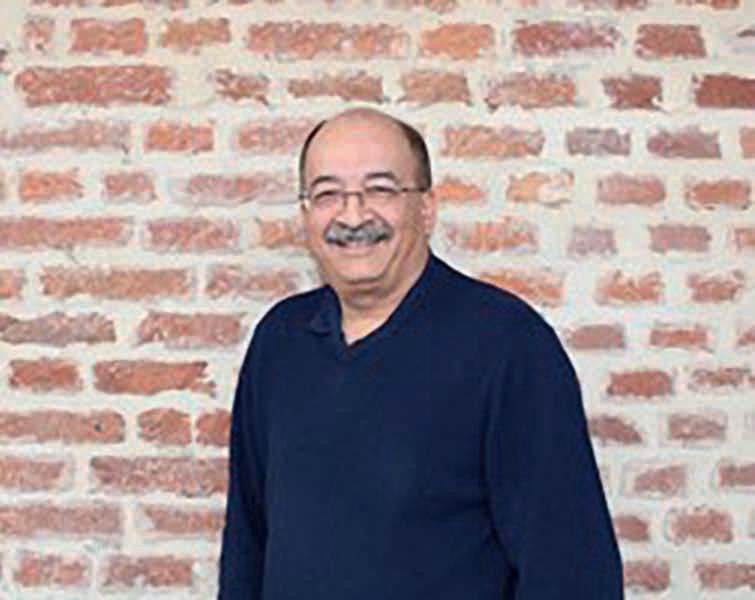
PGS launches Niger Delta reprocessing
PGS has launched its Deepwater Niger Delta Depth 2023 reprocessing project providing imaging of complex structures that delivers more than 5000 km2 of reprocessed PSDM multi-client 3D data.
This depth reprocessing focuses on the northwestern Nigerian offshore, rejuvenating two datasets: the Nigeria MegaSurveyPlus and OPL 314/315/321/323 MC3D.
The 2023 PSDM provides coverage over three blocks available as part of the Nigeria Mini Bid Round 2022: PPL-303DO, PPL-304-DO, and PPL-305-DO. The data also covers two adjacent, unlicensed blocks to the north (OPL 321 and OPL 323).
New understanding is available for two main structural provinces that are directly linked to the gravity-driven movement of the Akata Shale Formation. The eastern part is in the transitional detachment fold zone and contains subtle faulting along with low wavelength folding of Eocene to Quaternary stratigraphy. The west of the survey, situated in the outer fold and thrust belt, is characterised by closely spaced thrust faults.
The Niger Delta Basin is dominated by up to 12 km of Late-Cretaceous to Quaternary-aged clastics, deposited in an upward-coarsening regressive deltaic sequence. The main source rocks are Akata Formation marine shales and Lower Agbada Formation paralic shales. Proven reservoirs in the basin are formed of unconsolidated sandstones of the Agbada Formation deposited as stacked turbidite channel and fan
fault closures and subtle stratigraphic traps.
Through PSDM reprocessing, enhanced imaging of targets relevant for the 2022 mini bid round has been achieved with improved illumination of complex structures associated with the diapiric movement of the Akata Shale Formation. ‘The broadband reprocessing has provided seismic data that is rich in frequency content, with a comprehensive
complexes. The largest accumulations are trapped in roll-over anticlines in the hanging walls of growth faults, but hydrocarbons may also be found in
velocity model, enabling clearer imaging of structures, faults, and traps. AVO-compliant pre-stack data also helps to reveal subtle depositional features,’ said PGS.
28 FIRST BREAK I VOLUME 41 I JULY 2023 INDUSTRY NEWS
Sam Moharir, STRYDE’s head of business development.
TGS launches new acquisition technology in Brazil
TGS has launched the Amazonia Azul 2D-cubed project, the first of its kind offshore Brazil.
Covering a vast area of 268,506 km2, the Amazonia Azul 2D-cubed project will play a crucial role in unlocking the potential of the Brazil Equatorial Margin Area.
TGS CEO Kristian Johansen said: ‘The innovative 2D-cubed technology utilises a structurally conformable interpolation engine that transforms 2D data into a comprehensive 3D volume, which can be interpreted on a regional scale. This cutting-edge approach enables users to fully leverage the capabilities of their 3D interpretation software, significantly improving analysis and facilitating the communication of geological insights.’ Initial data delivery is expected in Q1 2024.
Meanwhile, TGS is expanding its Malvinas 3D Phase III, an expansion of its multi-client 3D coverage in the Malvinas Basin, offshore Argentina. The company plans to acquire a ~7,500 m2 3D seismic
survey and upon completion, TGS will have built a 3D library of 25,000 km2 in the Malvinas Basin. Acquisition of Malvinas 3D Phase III is expected to commence by early 2024.
Oil and gas round-up
Petrobras has identified hydrocarbons at the Aram block in the Santos Basin pre-salt offshore Brazil. Well 3-BRSA1387D-SPS is 260 km from the city of Santos at a water depth of 1979 m. The Aram block was acquired in March 2020 under the production sharing regime. Petrobras is the operator (80%) in partnership with CNPC (20%).
Chevron has agreed to acquire all of the outstanding shares of PDC Energy in an all-stock transaction valued at $6.3 billion. PDC shareholders will receive 0.4638 shares of Chevron for each PDC share. The total value of the deal, including debt, is $7.6 billion. The acquisition provides Chevron with assets expected to deliver higher returns in lower carbon intensity basins in the US. Chevron said PDC would offer development opportunities adjacent to Chevron’s position in the Denver-Julesburg (DJ) Basin, and additional acreage to Chevron’s position in the Permian Basin.
Equinor has found oil at production licence PL 255 B 25 km south of the Kristin field in the Norwegian Sea. The primary exploration target for the well
was to prove petroleum in Middle and Lower Jurassic reservoir rocks (the Garn, Ile and Tofte formations). Well 6406/5-2 S encountered a gas/condensate column of about 24 m in the Garn Formation, 46 m of which was a sandstone reservoir with poor-to-moderate reservoir properties. The Garn Formation had a total thickness of 60 m. The well also encountered 102 m and 140 m of sandstone reservoirs in the Ile and Tofte Formations, respectively, with moderate-to-good reservoir quality. Preliminary estimates place the size of the discovery in the Garn Formation between 0.2 and 1.1 million Sm3 of recoverable oil equivalent. Data acquisition has been carried out. Well 6406/5-2 S was drilled to a vertical depth of 4582 m and was terminated in the Ror Formation from the Early Jurassic period. Water depth at the site is 304 m.
Enauta has confirmed oil in a new reservoir section at the Atlanta NE accumulation in the Atlanta field offshore Brazil. It has concluded drilling and logging of well 9-ATL-8DP, identifying oil with excellent petrophysical properties at a 57 m section (measured depth). The accumulation is
2644 m deep, shallower than the reservoir under development. Enauta estimates that Atlanta’s NE resources in-place exceed 230 million barrels of oil. Atlanta’s Phase 1 targets first oil by mid-2024.
Aker BP has made a ‘significant oil discovery’ from the Øst Frigg Beta/Epsilon exploration well in the Yggdrasil area of the Norwegian North Sea. Preliminary estimates indicate a gross recoverable volume of 40-90 million barrels of oil equivalent (mmboe), surpassing the pre-drill estimate of 18-45 mmboe. The Yggdrasil development was previously stated at 650 mmboe (gross). Production is scheduled to commence in 2027. The discovery is located within production licences 873 and 442.
TotalEnergies (30%) and co-venturers Petrobras (30%), QatarEnergy (20%) and Petronas (20%) have signed a production sharing contract for the Agua Marinha block in the pre-salt Campos basin, offshore Brazil. Agua Marinha is a 1300 km2 exploration block in the pre-salt Campos Basin south of the Marlim Sul field and about 140 km from shore.

FIRST BREAK I VOLUME 41 I JULY 2023 29 INDUSTRY NEWS
Halliburton buys Norwegian reservoir management tech firm
database for interpretations for its subsurface data.












Equinor’s One Subsurface community will now have a standardised subsurface toolkit to seamlessly introduce geoscientists into different projects. The solution will consolidate all interpretation data into OpenWorks to enable geological interpretation at scale, and a smooth transition to cloud. Equinor and Halliburton will co-develop the DecisionSpace Geosciences exploration workflows.

Halliburton has acquired Resoptima, a leading Norwegian technology company that specialises in data-driven reservoir management.

The acquisition will integrate the reservoir modelling and predictive analytics of Resoptima into the Halliburton Landmark DecisionSpace 365 suite.
Since Resoptima was launched in 2013, more than 130 active fields globally have benefited from Resoptima’s technology, enjoying improved production volume predictions and comprehensive assessments of uncertainties and risks, said Halliburton.
‘Oil and gas remain integral to global energy supply,’ said Atila Mellilo, former CEO of Resoptima who joins the Halliburton Landmark leadership team. ‘To ensure the industry continues to evolve, we must








































focus on technologies that promote highly efficient production processes. The vision we share with Halliburton Landmark of a unified ensemble modelling approach will allow us to drive innovation, deliver increasing value to our customers, and expand our market reach.’
DecisionSpace365 and Resoptima solutions provide open architectures and interoperability with third-party software. The combined portfolio will maintain these features, enhancing existing and future customers’ ability to capitalise on their previous investments, said Halliburton.

Equinor has selected Halliburton Landmark DecisionSpace Geosciences as its standard geoscience toolbox and OpenWorks with Open Subsurface Data Universe (OSDU) as its corporate


























‘Consolidating our data and unifying our basic geosciences workflows will enable us to improve geoscientist productivity and eliminate key handovers, while accelerating subsurface evaluation, and improving data access and quality across the enterprise,’ said Åshild Hanne Larsen, vice-president subsurface excellence and digital at Equinor.
‘DecisionSpace Geosciences will provide a platform that shares subsurface insights, skills, and expertise to multidisciplinary teams at Equinor,’ said Nagaraj Srinivasan, senior vice-president, Landmark, Halliburton Digital Solutions, and Consulting. ‘OpenWorks enhanced with OSDU support will deliver the industry’s only multiuser, shared environment, easing Equinor’s enterprise architecture transition to the cloud.’
www.norsarinnovation.com



























































30 FIRST BREAK I VOLUME 41 I JULY 2023 INDUSTRY NEWS
NORSAR is at the global forefront of commercial software products and services in the field of seismic forward modelling and microseismic monitoring.
Our core applications include survey evaluation, processing and interpretation support, 4D time laps studies, and reservoir analysis.
sales@norsar.no MDesign SeisRoX 2D 3D NORSAR Innovation Jul23.indd 1 14/06/2023 09:31
ADVERTISEMENT
Left to right: Tore Felix Munck (Resoptima CTO and Founder), Nagaraj Srinivasan (Nagaraj Srinivasan, SVP of Landmark, Halliburton Digital Solutions, and Consulting), Atila Mellilo (Resoptima CEO) and Sverre Munck (Chairman of the Resoptima board).








































































































Special Topic MODELLING / INTERPRETATION
Modelling and interpretation is rapidly developing with advances in machine learning and artificial intelligence leading to faster and better results. This is enabling more efficient oil and gas exploration and gearing up for the Energy Transition with projects in wind and carbon capture leading the way. High performance and algorithmic innovations, enhancing the quality and quantity of data, are presented here.
Hau Pham Huu introduces a post-stack workflow which enhances the quality of intercept and gradient data by using blued partial angle stacks to correct the offset scaling.
Christoph Georg Eichkitz et al focus on the application of textural attributes to estimate volumetric anisotropy based on the grey level co-occurrence matrix (GLCM).
Huw James et al explain why we need to reappraise our choices when we change our primary goal from imaging to full waveform Inversion.
David Markus et al demonstrate how the use of RGB colour blending, when combined with Spectral Decomposition and band-limited attributes, is a powerful interpretation aid for determining stratigraphic relationships, distribution of bodies, and even as a direct hydrocarbon indicator.

Julien Razza et al present new methods for waveform classification on a stack of horizons.
Anita Torabi suggests experiments that can study the fault growth process and answer fundamental questions about material properties such as friction and the stress configuration needed to create brittle and ductile deformation in the Earth.
David Barlass et al present a methodology applied to the UK North Sea to refine CO2 storage prospectivity evaluations and develop future storage opportunities.
Submit an article
First Break Special Topics are covered by a mix of original articles dealing with case studies and the latest technology. Contributions to a Special Topic in First Break can be sent directly to the editorial office (firstbreak@eage.org). Submissions will be considered for publication by the editor.
It is also possible to submit a Technical Article to First Break. Technical Articles are subject to a peer review process and should be submitted via EAGE’s ScholarOne website: http://mc.manuscriptcentral.com/fb
You can find the First Break author guidelines online at www.firstbreak.org/guidelines.
Special Topic overview
January Land Seismic
February Digitalization / Machine Learning
March Reservoir Monitoring
April Unconventionals and Passive Seismic
May Global Exploration Hotspots
June Securing a Sustainable Future Together
July Modelling / Interpretation
August Near Surface Geo & Mining
September Reservoir Engineering & Geoscience
October Energy Transition
November Marine Acquisition
December Data Management and Processing
More Special Topics may be added during the course of the year.
46 FIRST BREAK I VOLUME 41 I JULY 2023
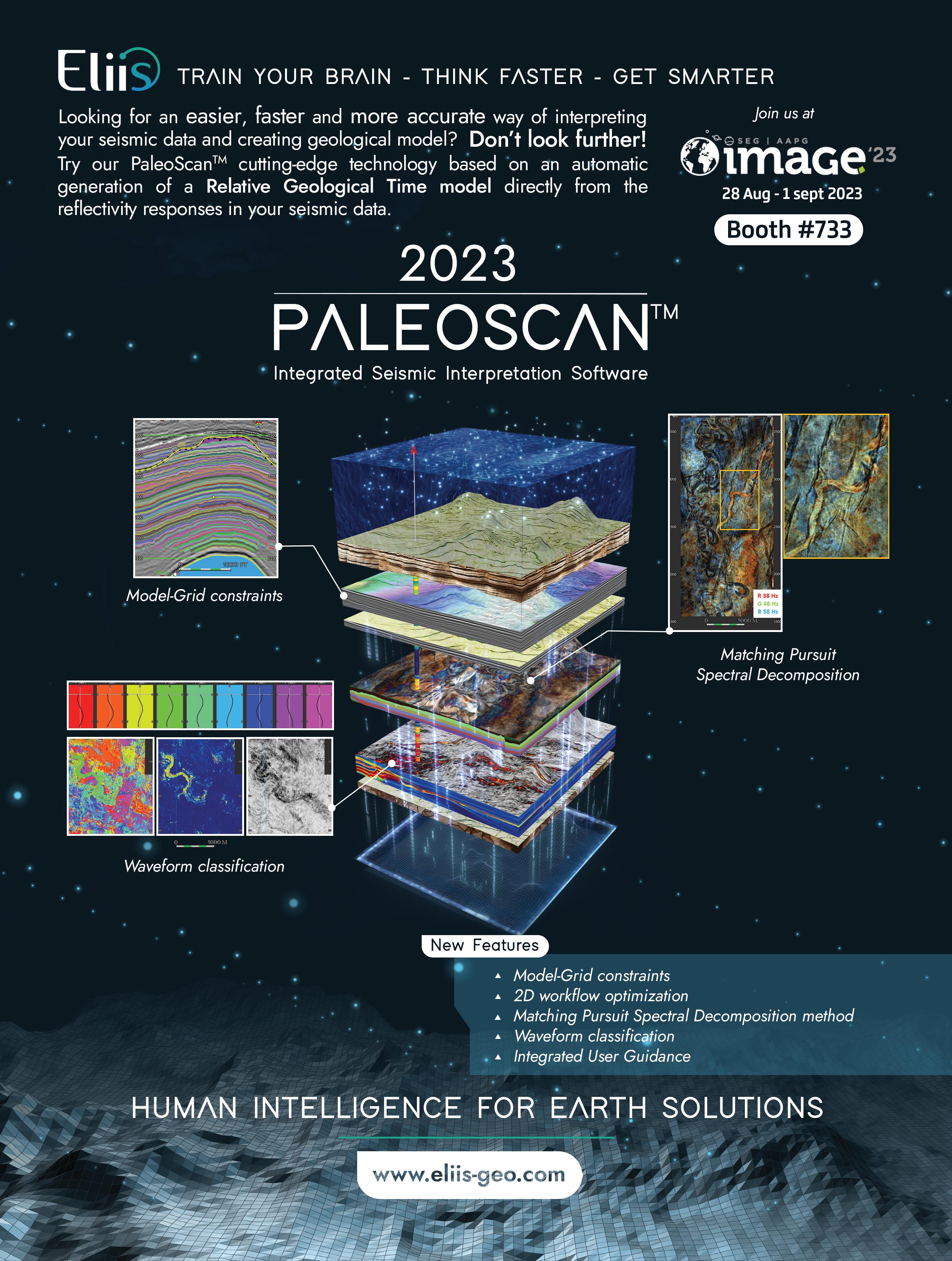
CALENDAR OF EVENTS
EAGE Conference on the Future of Energy
Role of Geoscience in the Energy Transition

Kuala Lumpur, Malaysia www.eage.org
July 2023
9-14 Jul Goldschmidt2023 2023.goldschmidt.info
August 2023
15-16 Aug 2 nd EAGE Workshop on Fluid Flow in Faults and Fracture - Modelling, Uncertainty and Risk www.eage.org Canberra Australia
16-18 Aug First EAGE Conference on Deepwater Equatorial Margin: New Energy Frontier for South America “From exploration to Production with social sustainability” www.eage.org
22-23 Aug EAGE Workshop on Unlocking Carbon Capture and Storage Potential www.eage.org
September 2023
3-7 Sep Near Surface Geoscience Conference & Exhibition 2023 www.eagensg.org
de Janeiro Brazil
Lumpur Malaysia
France 12-13 Sep EAGE Conference on the Future of Energy - Role of Geoscience in the Energy Transition www.eage.org
10-15 Sep IMOG 2023 31st International Meeting on Organic Geochemistry www.imogconference.org
Sep 24th World Petroleum Congress www.24wpc.com
Lumpur Malaysia
18-20 Sep Seventh EAGE Borehole Geophysics Workshop www.eage.org
Sep PESGB/HGS Africa Conference 2023 africa.pesgb.org.uk
Sep First EAGE Conference on South Atlantic Offshore Energy Resources www.eage.org
Sep Seventh EAGE High Performance Computing Workshop www.eage.org
Sep IPETGAS 2023 www.ipetgas.org
October 2023
2-4 Oct IOR+ 2023
22 nd European Symposium on Innovative and Optimised Resource Utilisation www.ior2023.org
Italy
Italy 18-20 Sep Second EAGE Seabed Seismic Today Workshop www.eage.org
Hague The Netherlands
90 FIRST BREAK I VOLUME 41 I JULY 2023 CALENDAR EAGE Events Non-EAGE Events
Lyon
France
Rio
Kuala
Edinburgh
United Kingdom
Montpellier
Kuala
Calgary
Milan
Milan
London
20-22
Montevideo Uruguay 25-27
Lugano Switzerland 27-29
Ankara
17-21
Canada
20-21
United Kingdom
Turkey
The
12-13 SEPTEMBER 2023
5-6 Oct First EAGE Workshop on Hydrogen & Carbon Capture Sequestration in LATAM www.eage.org
5-7 Oct 57 th CEEC Meeting ceecsg.org
9-13 Oct Africa Oil Week africa-oilweek.com
11-13 Oct 7 th World Engineers Convention www.wec2023.com
17-18 Oct EAGE Workshop on Data Science - From Fundamentals to Opportunities www.eage.org
19-20 Oct First EAGE Workshop on Water Footprint www.eage.org
23-26 Oct 15 th Euroconference on Rock Physics and Rock Mechanics euroconf23.dryfta.com
November 2023
7-8 Nov 2 nd EAGE/Aqua Foundation Indian Near Surface Geophysics Conference & Exhibition www.nearsurfacegeophysics.in
9-10 Nov Third EAGE Workshop on Mineral Exploration in Latin America: “The Role of Mining in the Energy Transition“ www.eage.org
14-17 Nov GET 2023
4th EAGE Global Energy Transition Conference & Exhibition www.eageget.org
15-17 Nov Second EAGE Workshop on Geothermal Energy in Latin America: Worldwide Opportunities www.eage.org
15-17 Nov 3 rd EAGE Workshop on Fiber Optics Sensing for Energy Applications www.eage.org
21-22 Nov 2 nd EAGE Workshop on Quantifying Uncertainty in Depth Imaging www.eage.org
21-23 Nov Fifth EAGE Borehole Geology Workshop www.eage.org
27-30 Nov Fifth EAGE Conference on Petroleum Geostatistics www.petroleumgeostatistics2023.org
28-30 Nov EAGE/AAPG Hydrocarbon Seals Workshop www.eage.org
December 2023
4-6 Dec 4th EAGE Eastern Mediterranean Workshop www.eage.org
4-8 Dec 17th Workshop of the International Lithosphere Program ILP-Task Force VI on Sedimentary Basins https://ilp-abudhabi.com/
January 2024
28-31 Jan First EAGE Workshop on Tectonostratigraphy of the Arabian Plate www.eage.org
30-31 Jan EAGE Workshop on New Discoveries in Mature Basins www.eage.org
February 2024
12-14 Feb IPTC 2024 www.iptcnet.org/
26-28 Feb First EAGE Data Processing Workshop www.eage.org
March 2024
4-6 Mar EAGE Sub-Saharan Africa Energy Forum www.eage.org
19-21 Mar AAPG/EAGE Papua New Guinea Petroleum Geoscience Conference and Exhibition www.eage.org
25-27 Mar 4th EAGE Digitalization Conference & Exhibition www.eagedigital.org
EAGE Events Non-EAGE Events
Medellin Colombia
Tirana Albania
Cape Town South Africa
Prague Czech Republic
Kuala Lumpur Malaysia
Bogota Colombia
Woudschoten The Netherlands
New Delhi India

Santiago de Chile Chile
Paris France
Guanacaste Costa Rica
Chengdu China
Kuala Lumpur Malaysia
Al Khobar Saudi Arabia
Porto Portugal
Al Khobar Saudi Arabia
Athens Greece
Abu Dhabi UAE
Riyadh Saudi Arabia
Kuala Lumpur Malaysia
Al Khobar Saudi Arabia
Cairo Egypt
Windhoek Namibia
Port Moresby Papua New Guinea
Paris France
FIRST BREAK I VOLUME 41 I JULY 2023 91 CALENDAR
REGISTER TODAY TO BENEFIT FROM THE EARLY BIRD FEE!
































3-7 SEPTEMBER 2023 | EDINBURGH, UK 29th 3rd 2nd 1st Conference on Sub-surface Characterisation for Offshore Wind EAGENSG.ORG u r o p e a n M e e t i n g o f E n v i r o n m e n t a l a n d n g i n e e r i n g G e o p h y s i c s o f r e n ce o n G e o p h y s i c s r f r a s t r u c tu r e P l an n i n g , o n t o r i n g a n d B I M o r i b u i n t o E x p lo r a t i o n a n d M a n a g e m e n t o f G r o u n d w a t e r L a n d- U s e a n d N a t u r a l H a z a r d s u n d e r a C h a n g i n g C l i m a t e n f e r en ce o n H y d r o g e o p h y s i c s
EXPLORE NEAR SURFACE GEOPHYSICS WITH EAGE THIS SEPTEMBER IN EDINBURGH! MAIN SPONSOR





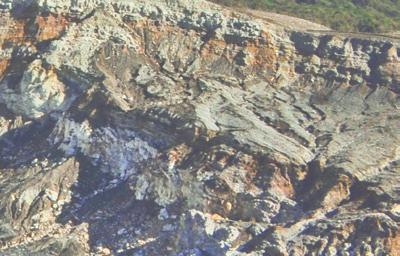



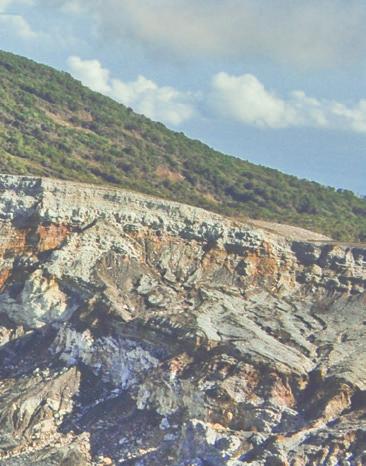























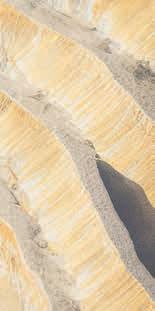



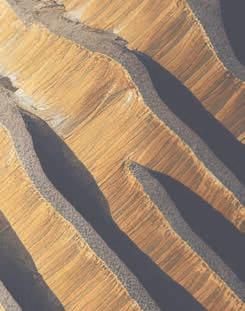
















Call for Abstracts deadline: 1 August 2023 15-17 NOVEMBER 2023 • GUANACASTE, COSTA RICA WWW.EAGE.ORG Second EAGE Workshop on Geothermal Energy in Latin America PACE SUPPORT 15DEADLINE: AUGUST GELA23 V2H.indd 1 12/06/2023 11:14 Call for Abstracts Closing on 1 August 2023 9-10 NOVEMBER 2023 • SANTIAGO DE CHILE, CHILE WWW.EAGE.ORG Third EAGE Workshop on Mineral Exploration in Latin America THE ROLE OF MINING IN THE ENERGY TRANSITION WME23 V2H.indd 1 12/06/2023 14:29
•
•
•
•
•













































































































































































































































































































































































































































































































































































































































































































SUBMIT YOUR ABSTRACT! EAGEGET.ORG
14-17 NOVEMBER 2023 • PARIS, FRANCE HOSTED BY
OFFSHORE RENEWABLE ENERGY
ENERGY STORAGE
TOPICS
•
• CCUS •
ENERGY
INTEGRATION
• GEOTHERMAL
•
CROSS-USES
ENVIRONMENT & SUSTAINABILITY
SOLUTIONS & SOCIETY
GEORESOURCES IN THE FUTURE
EDUCATION & TRAINING
SAVE THE DATE !
10-13 JUNE 2024













VISIT EAGEANNUAL.ORG FOR MORE INFORMATION

HOSTED BY
PARTNER SPONSORS




INCLUDING













































































































































































































































































































































































































































































































































































































































































































































































































































































































































